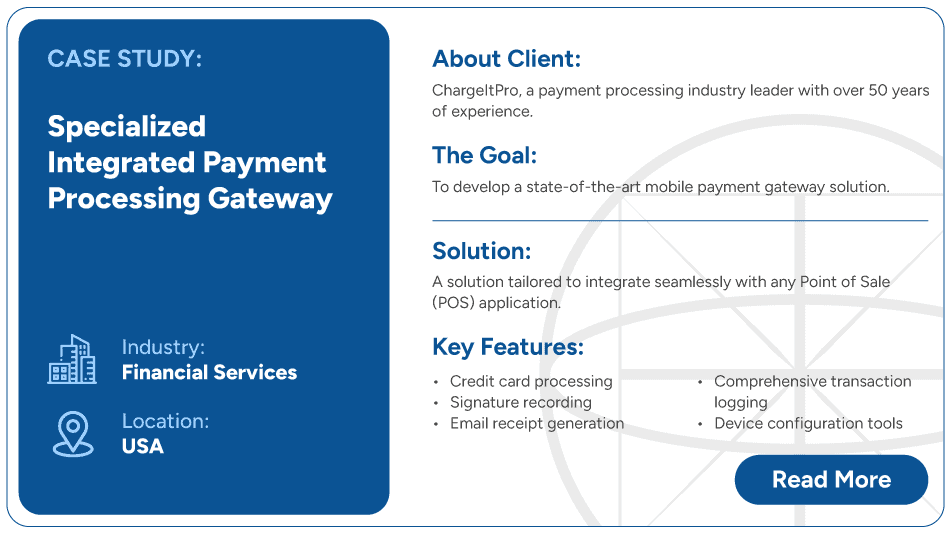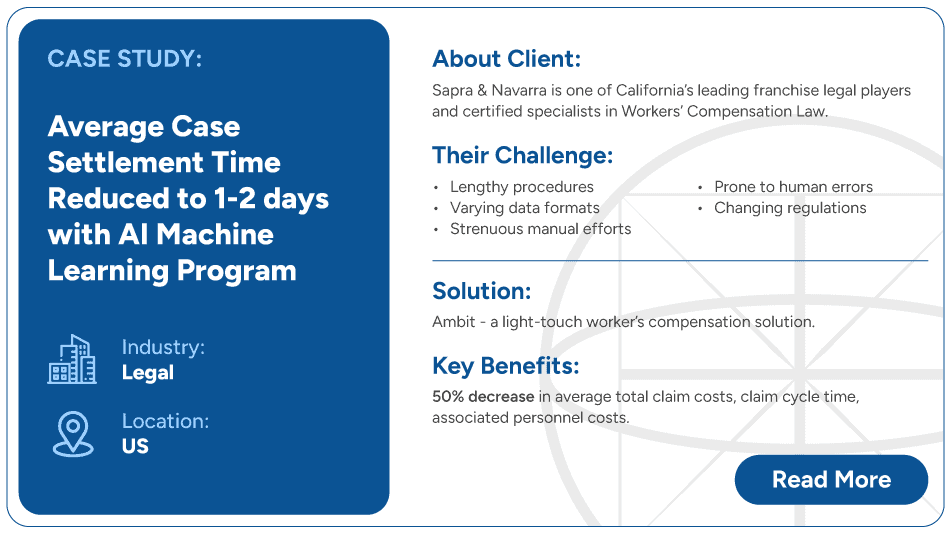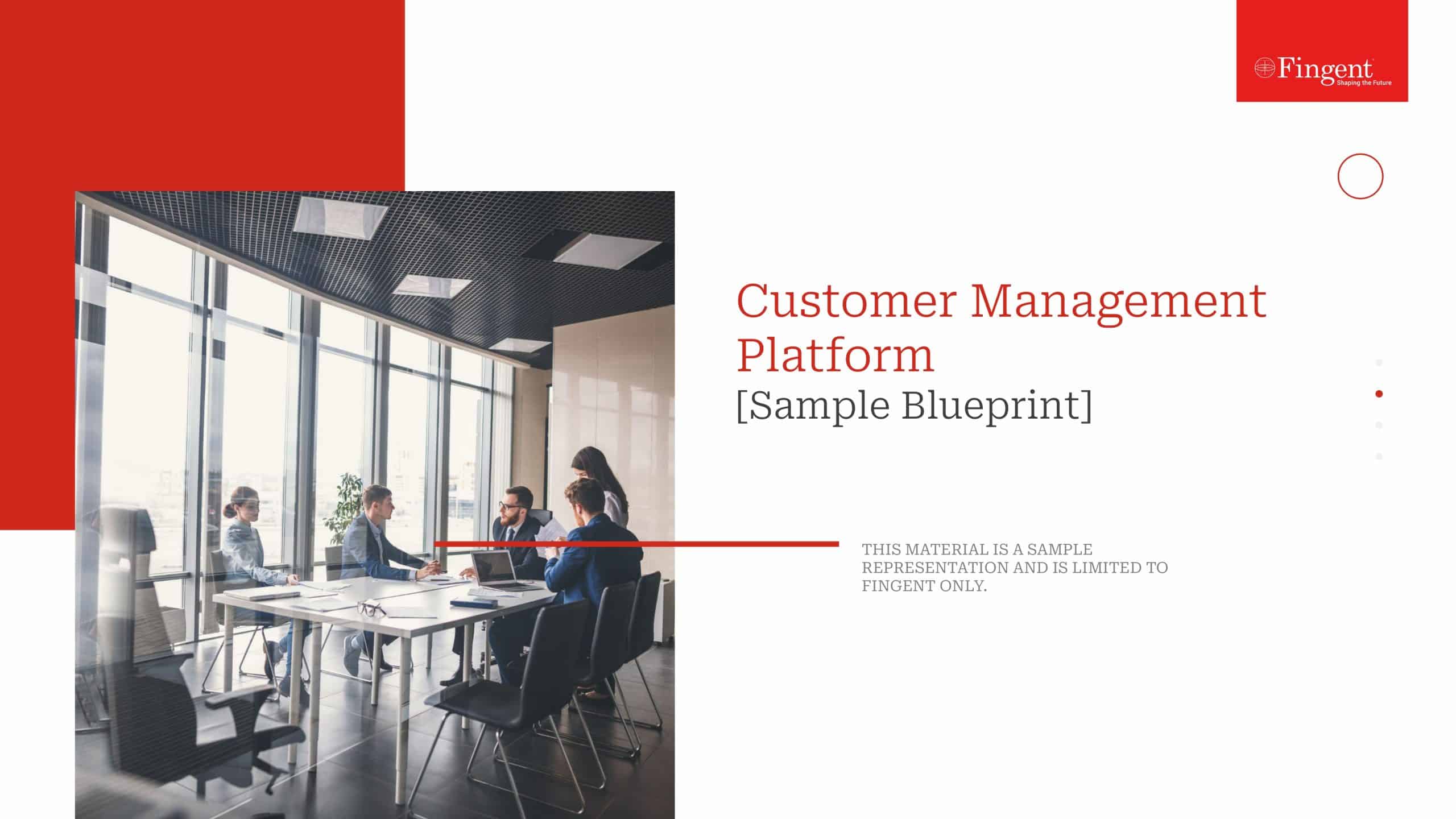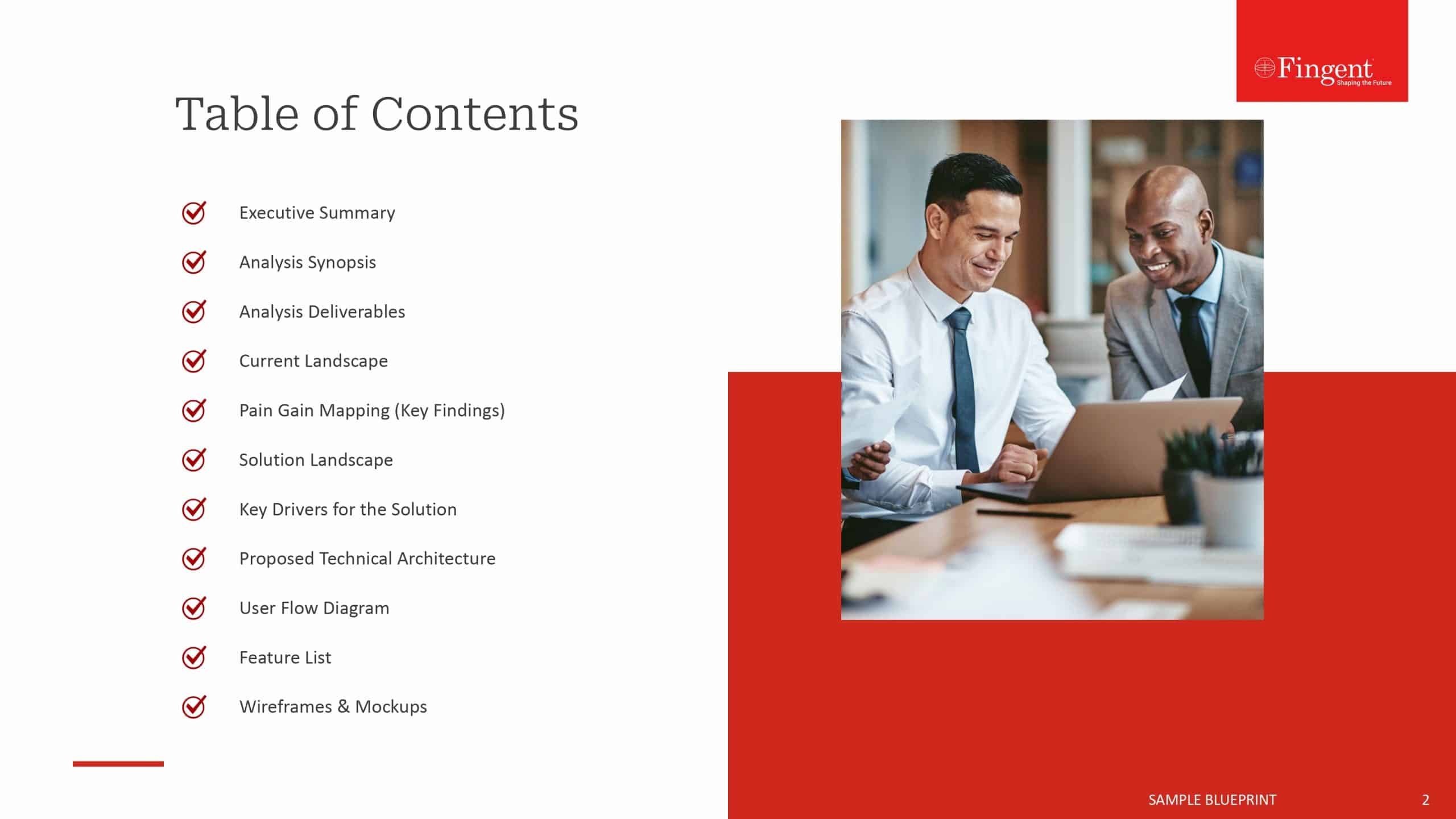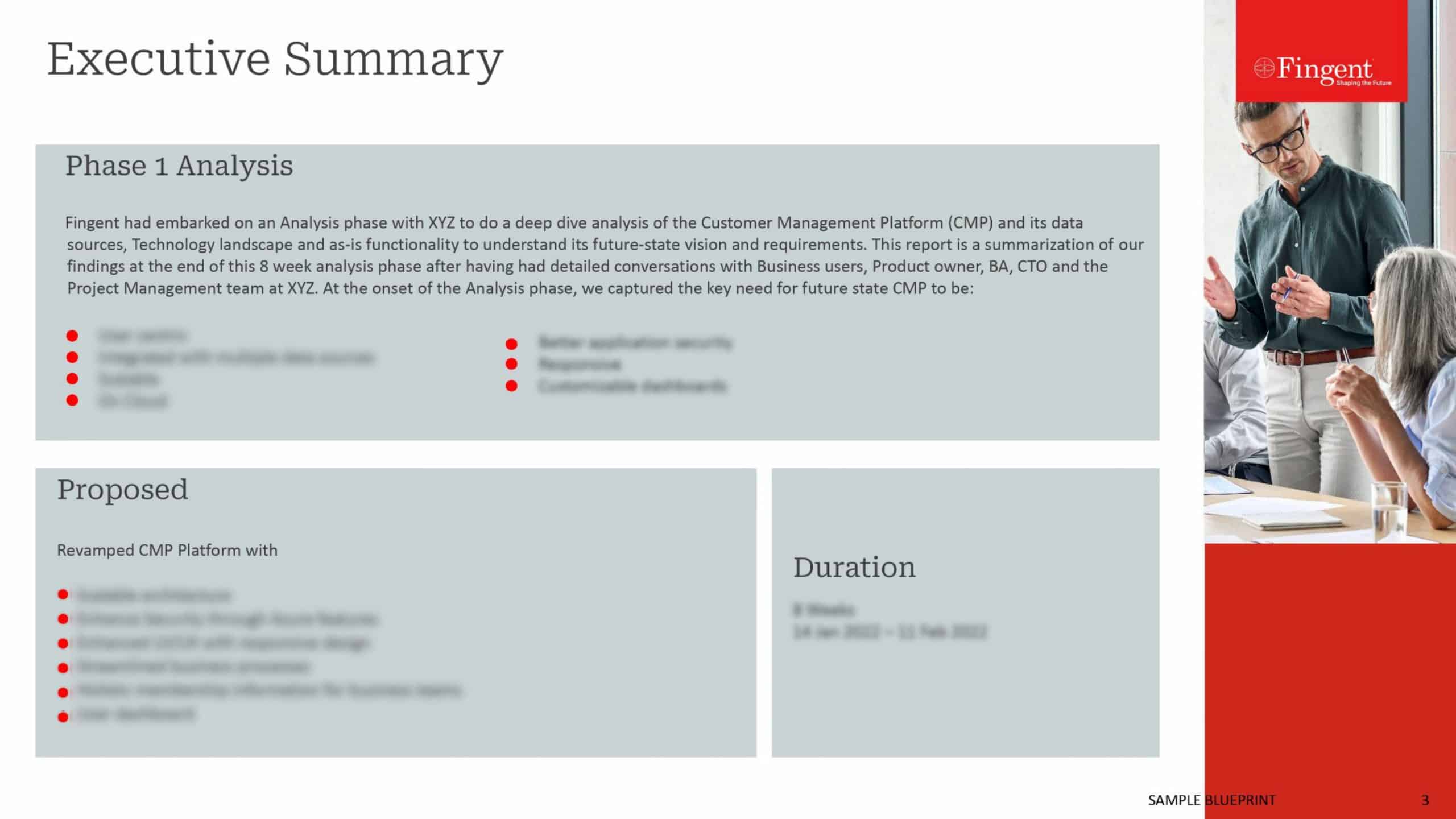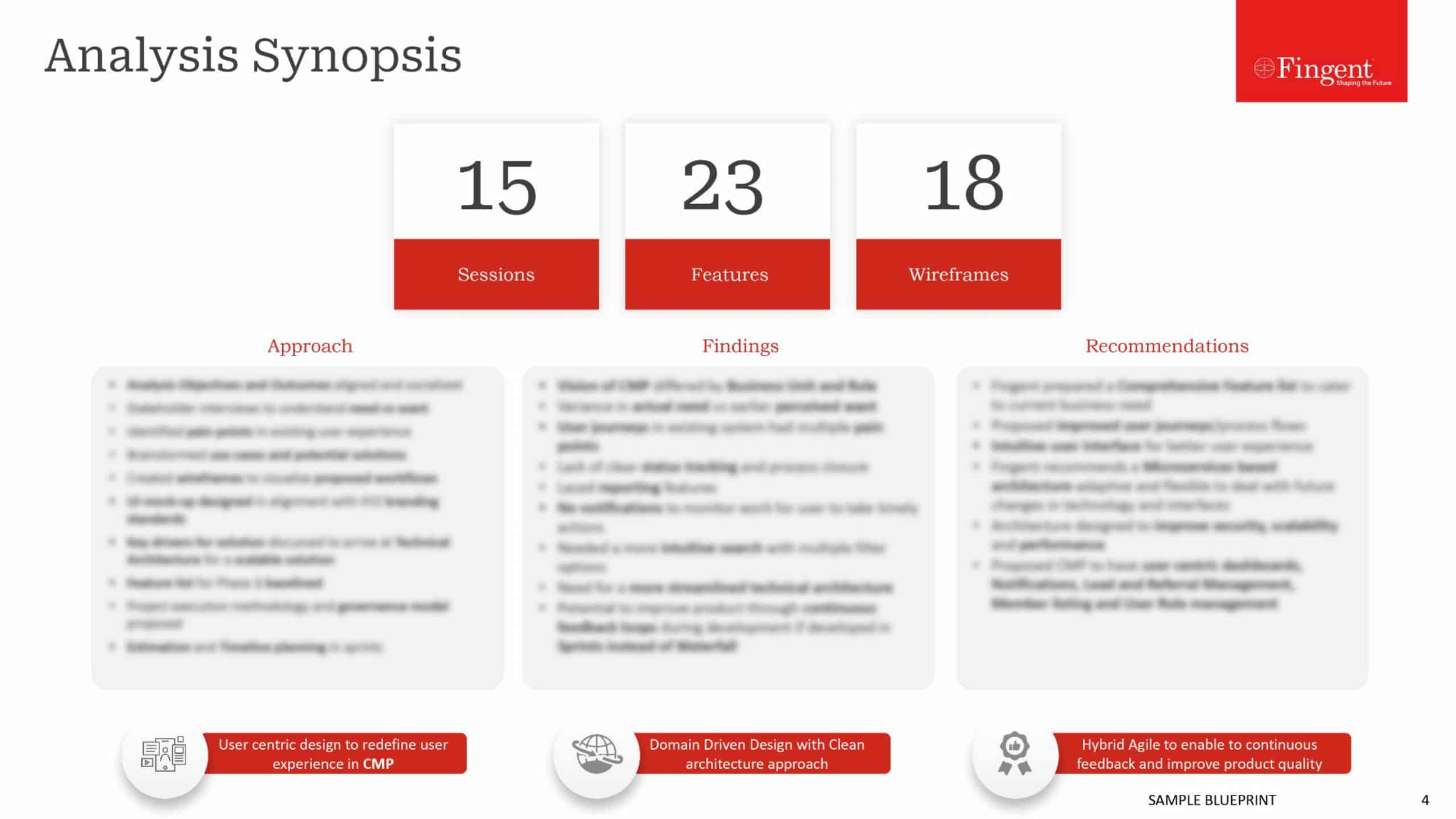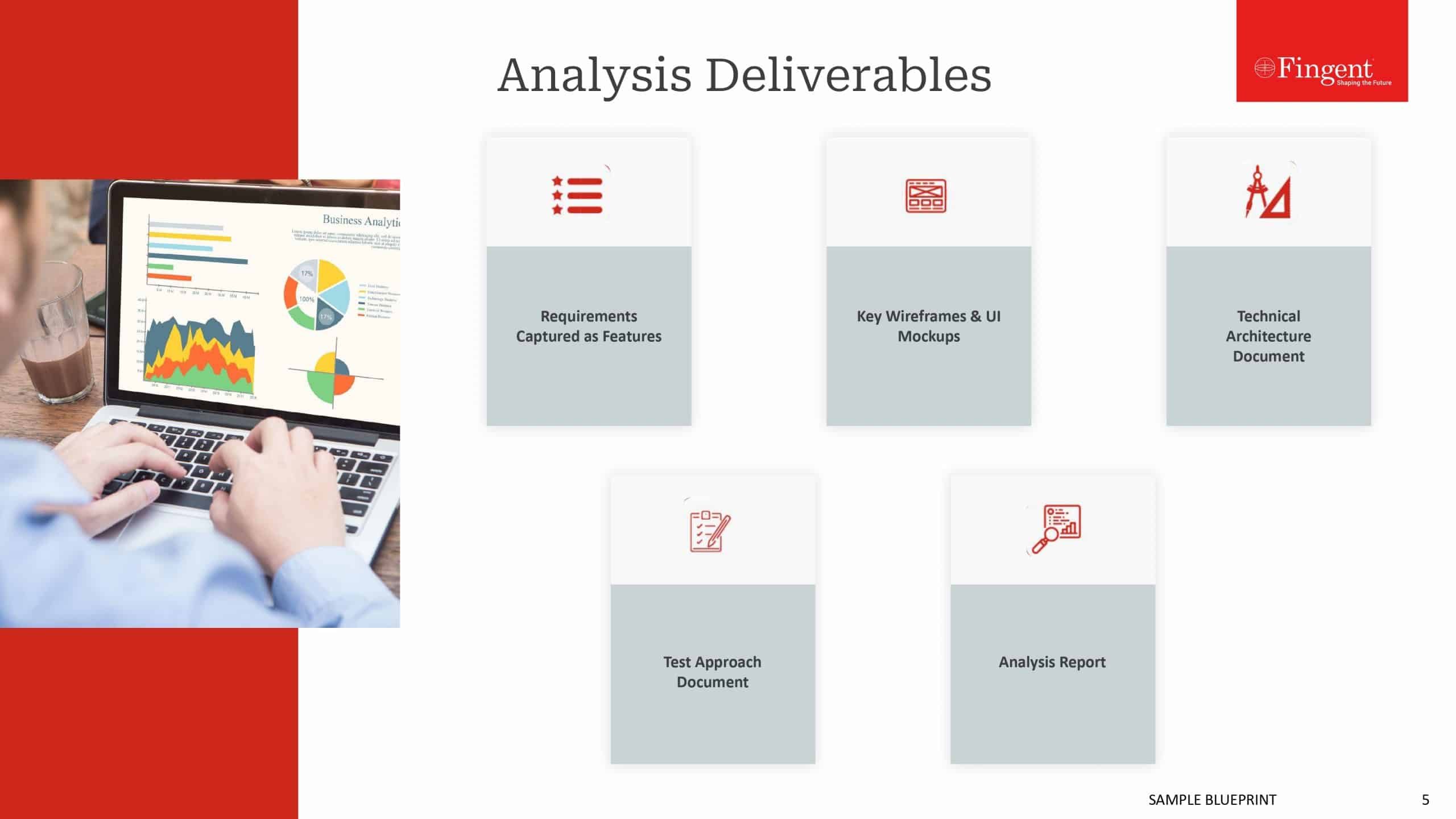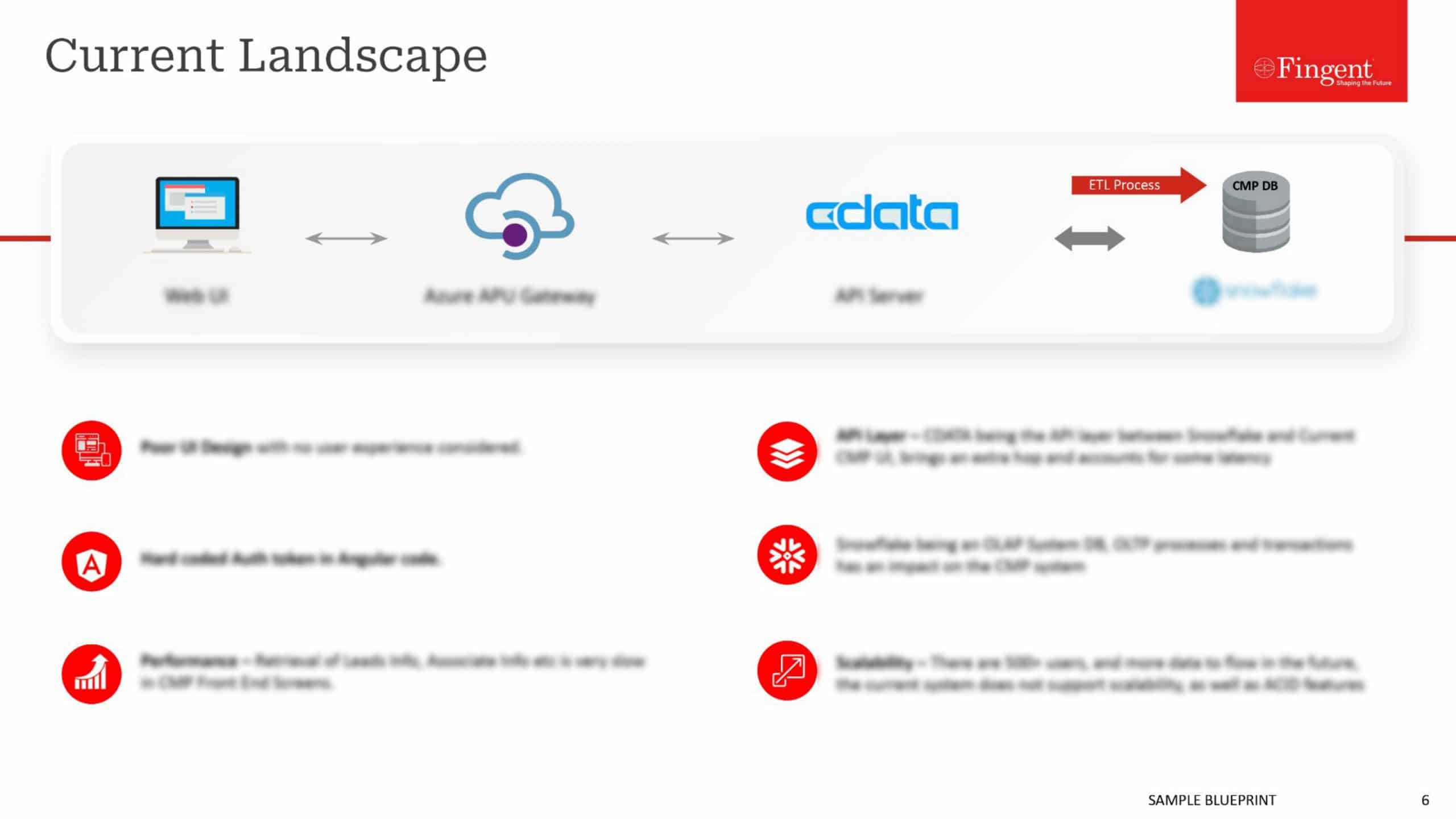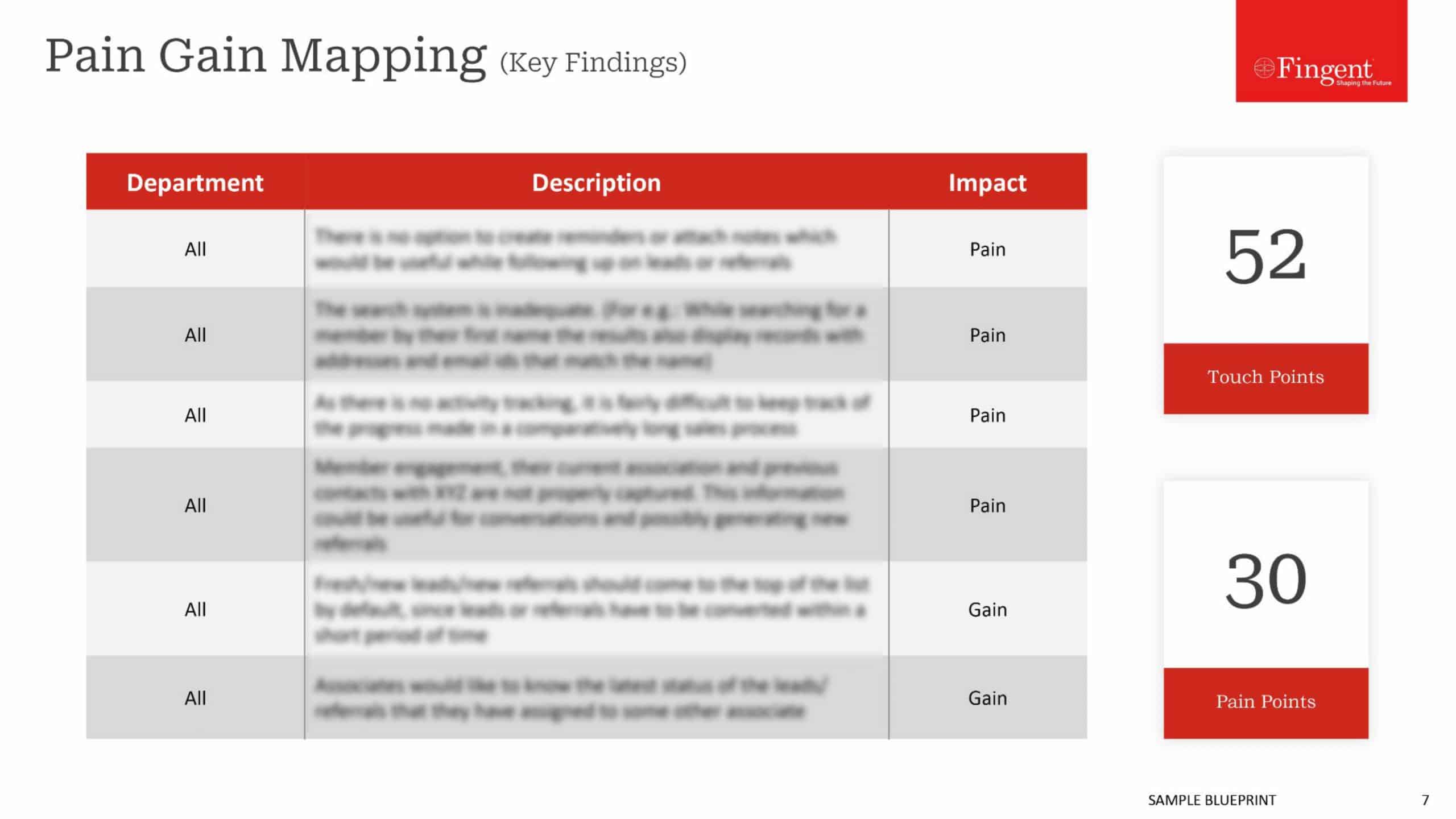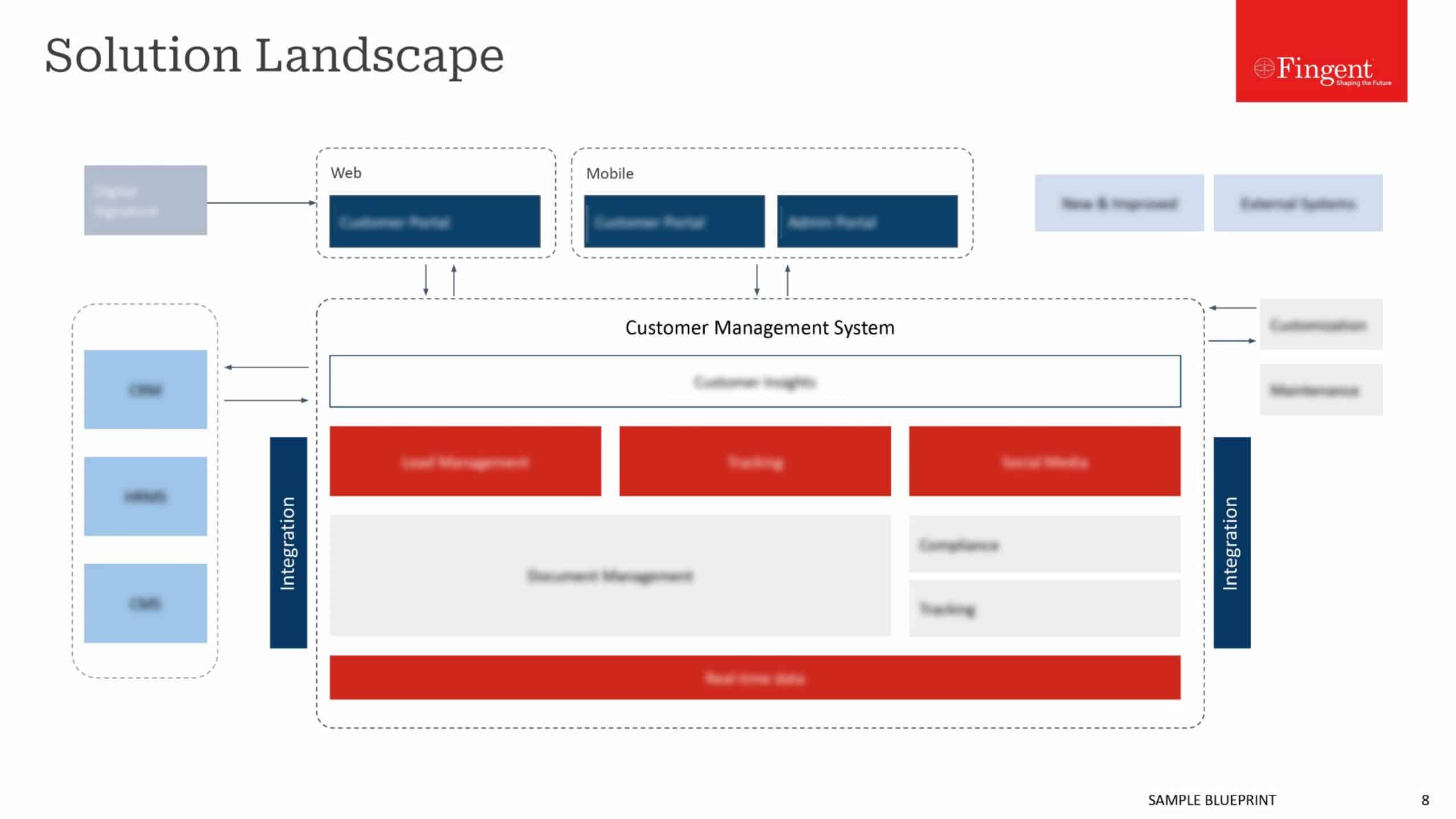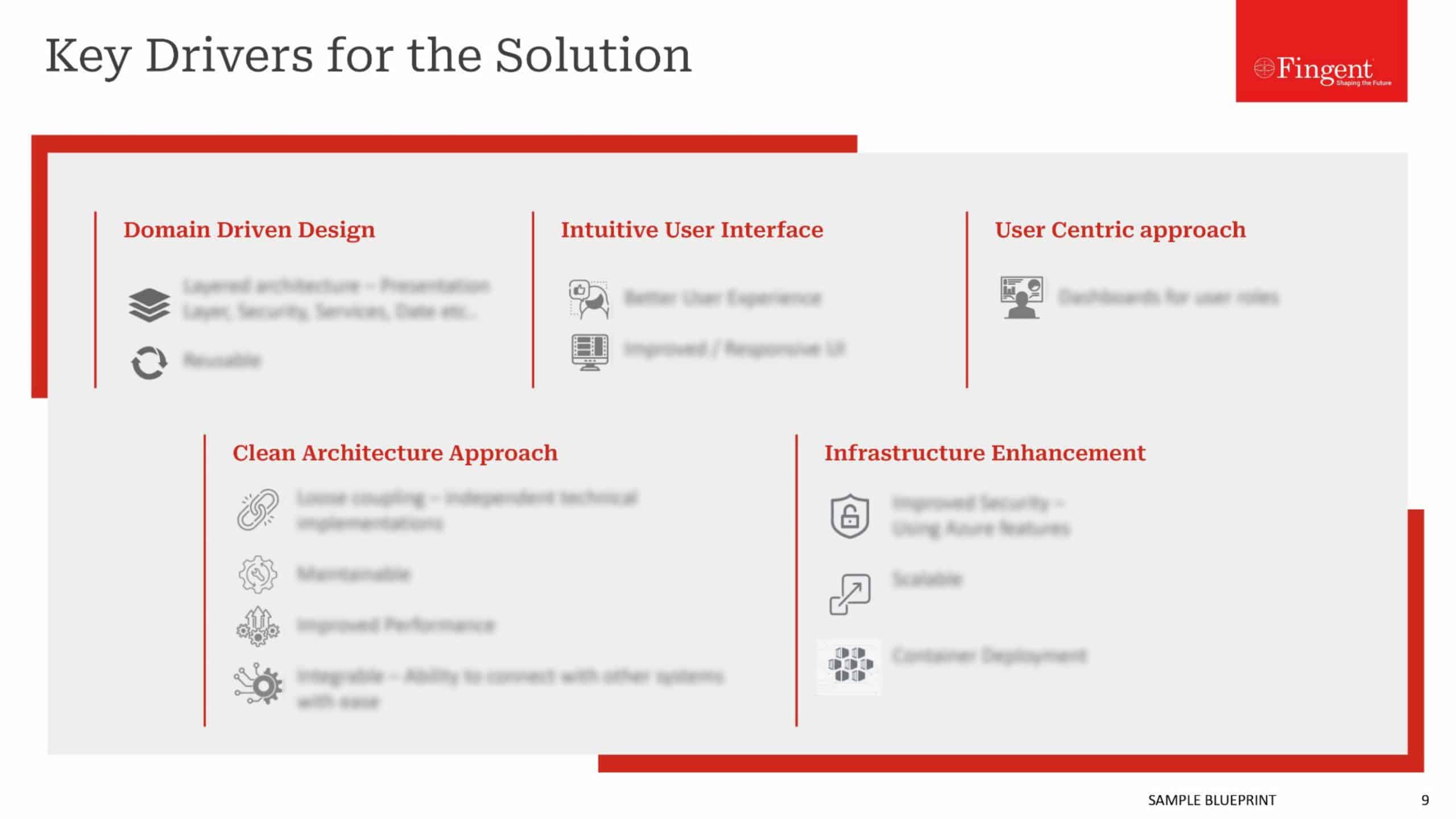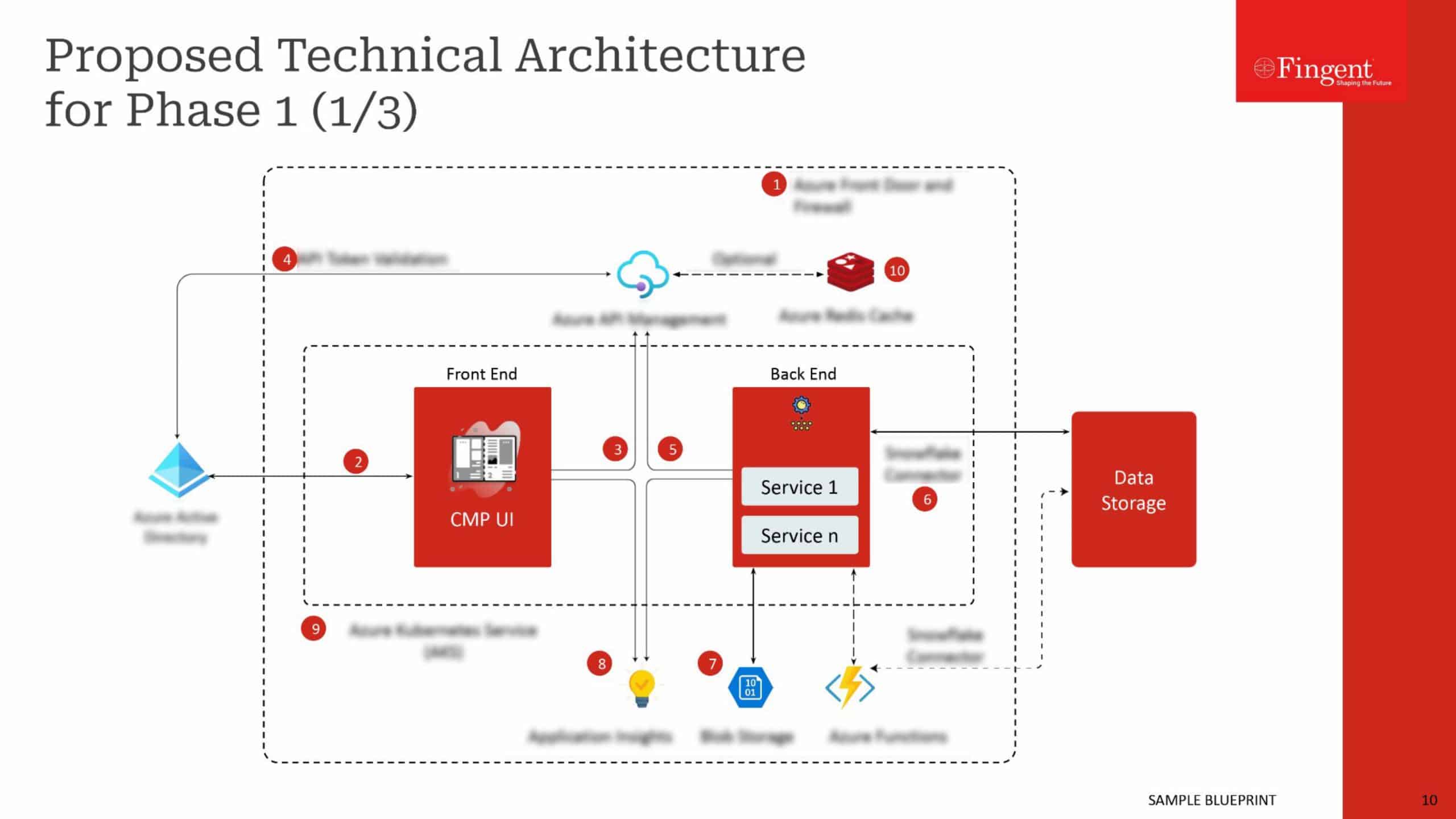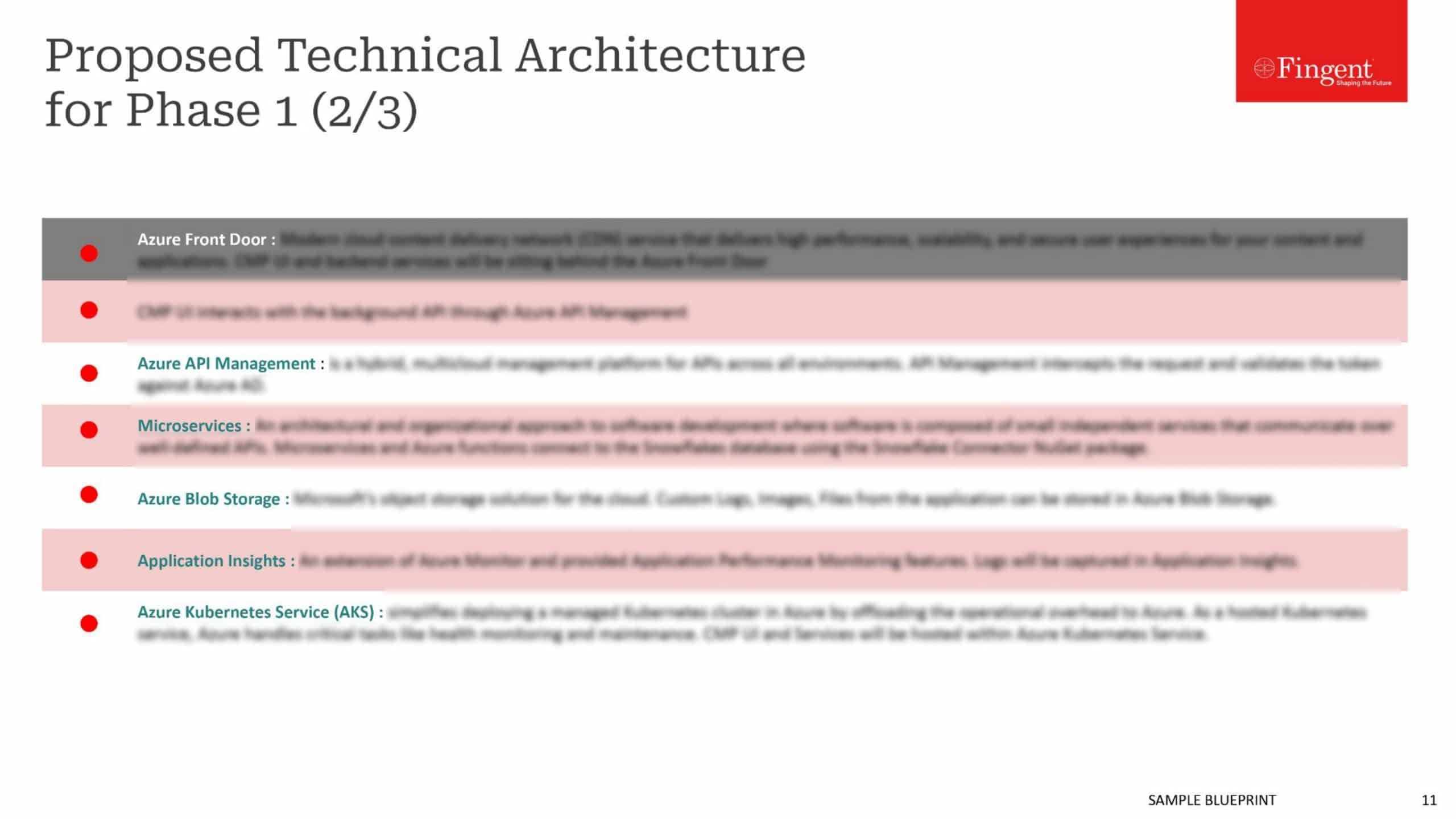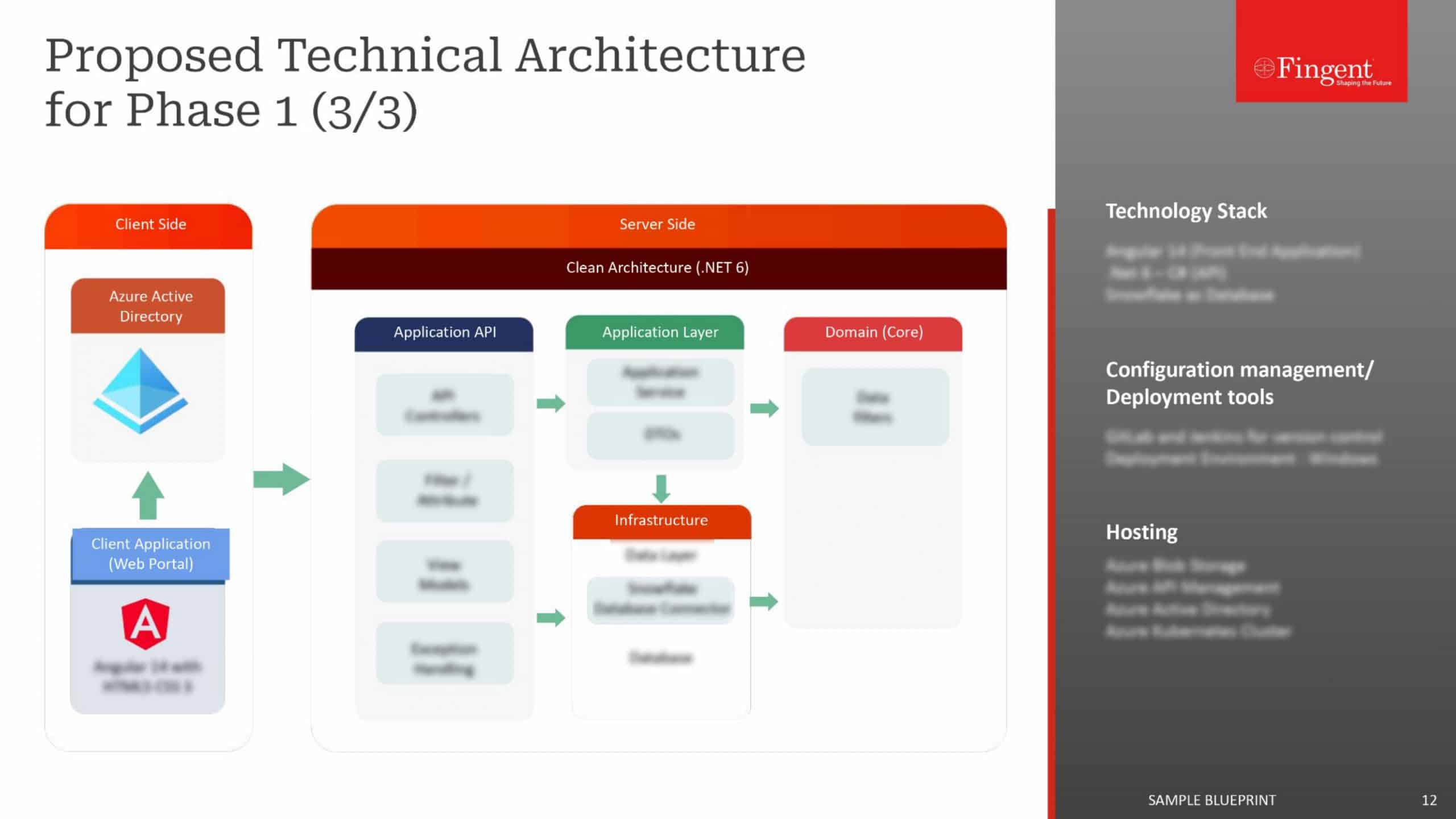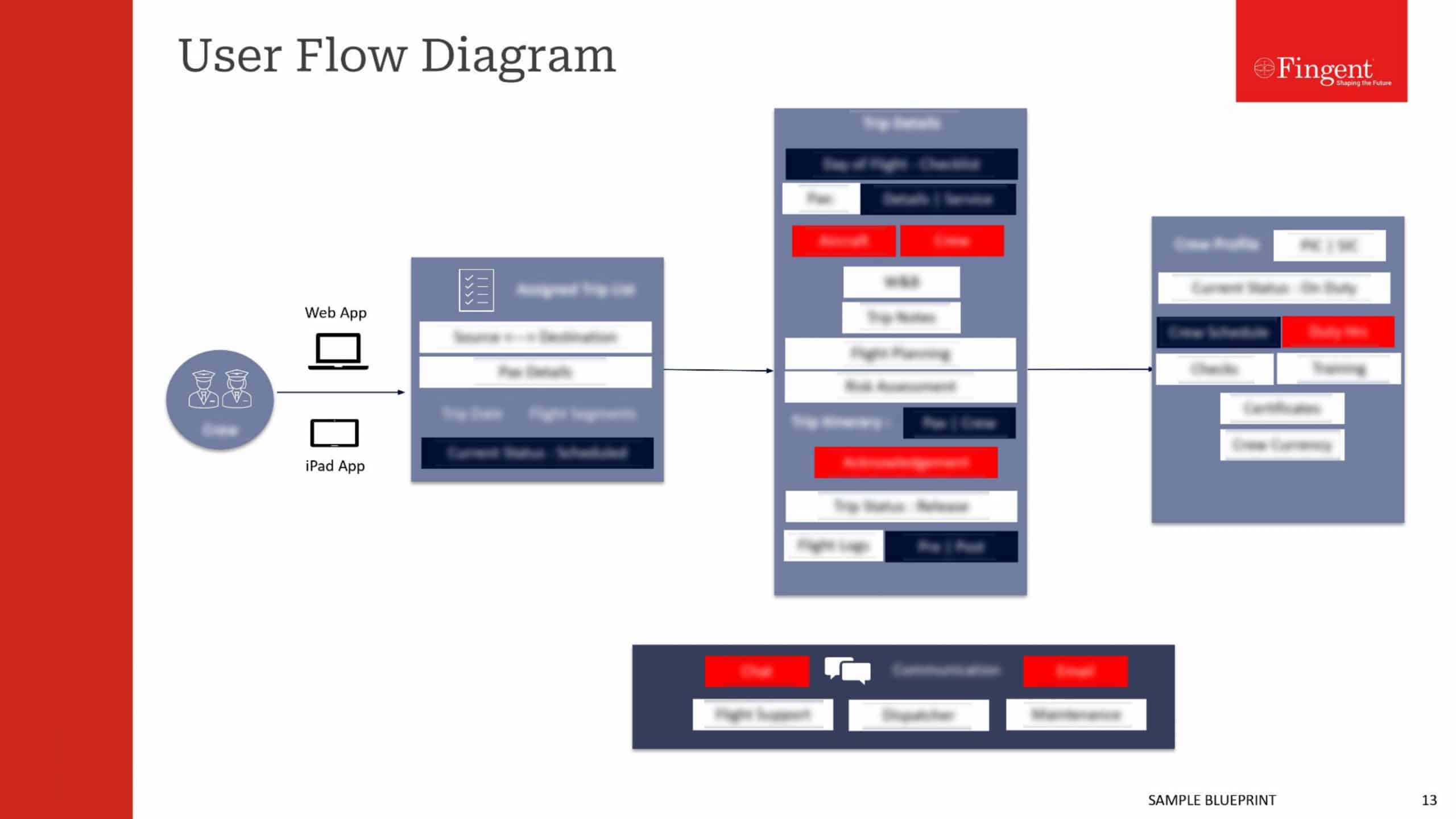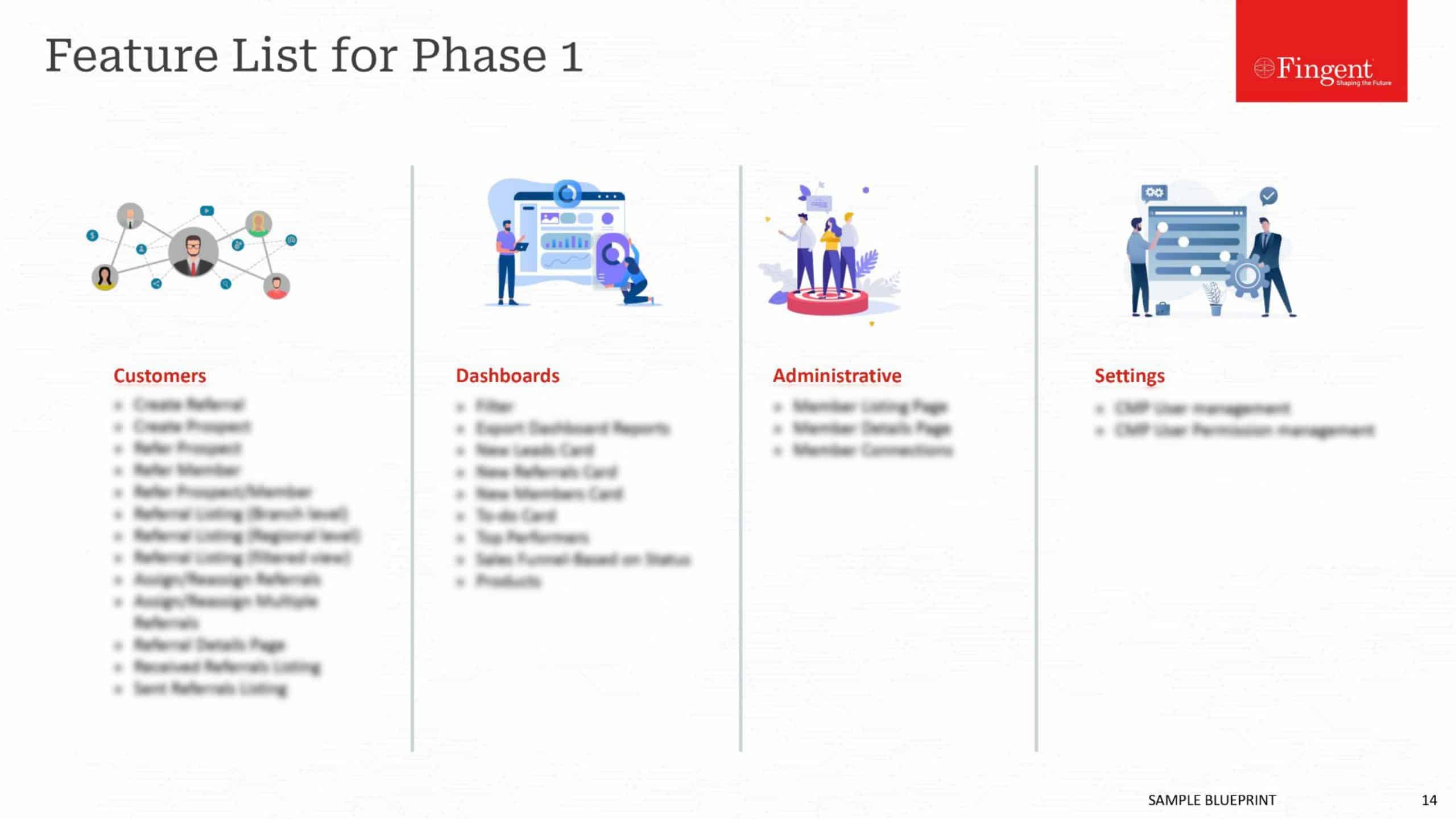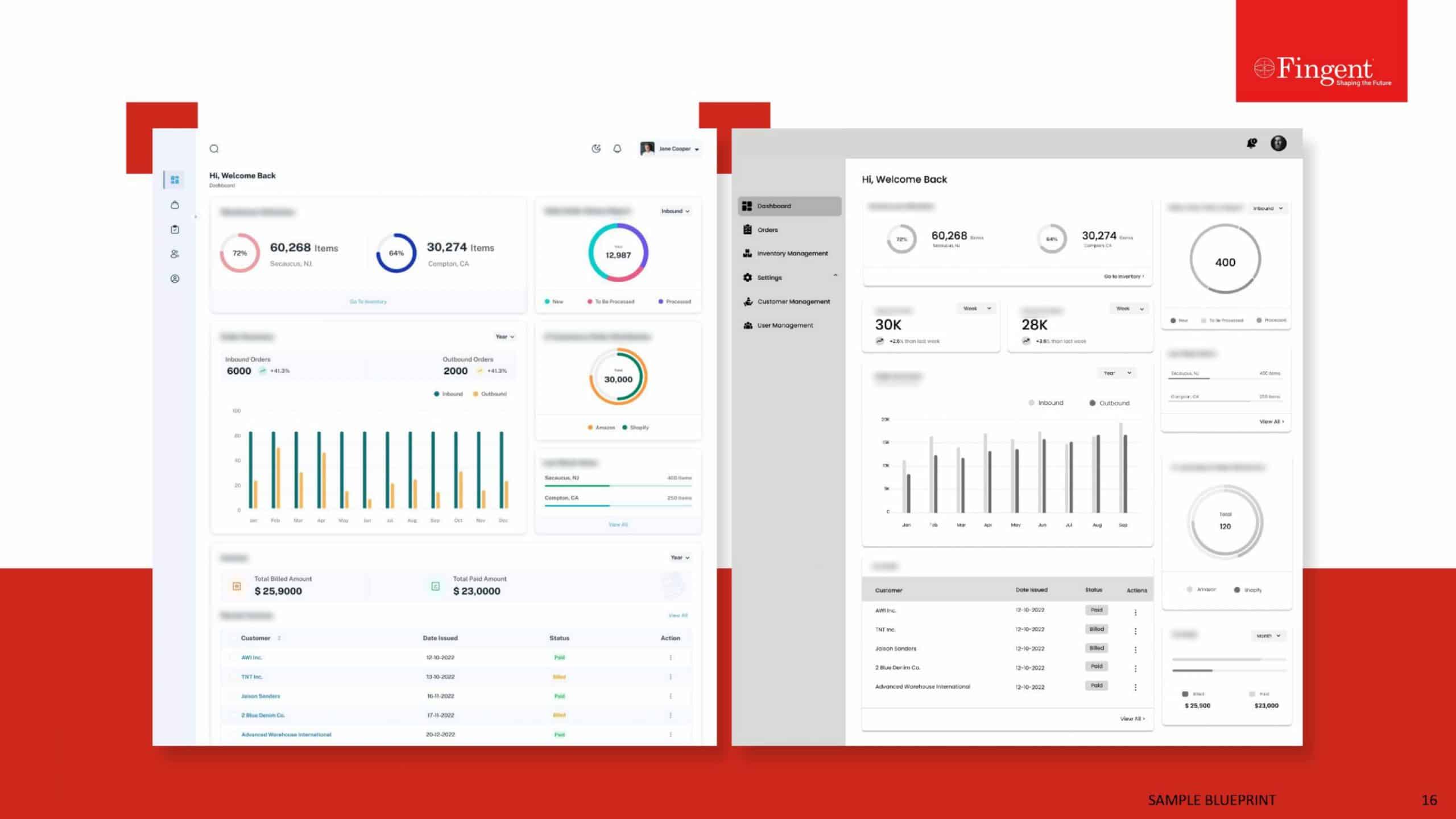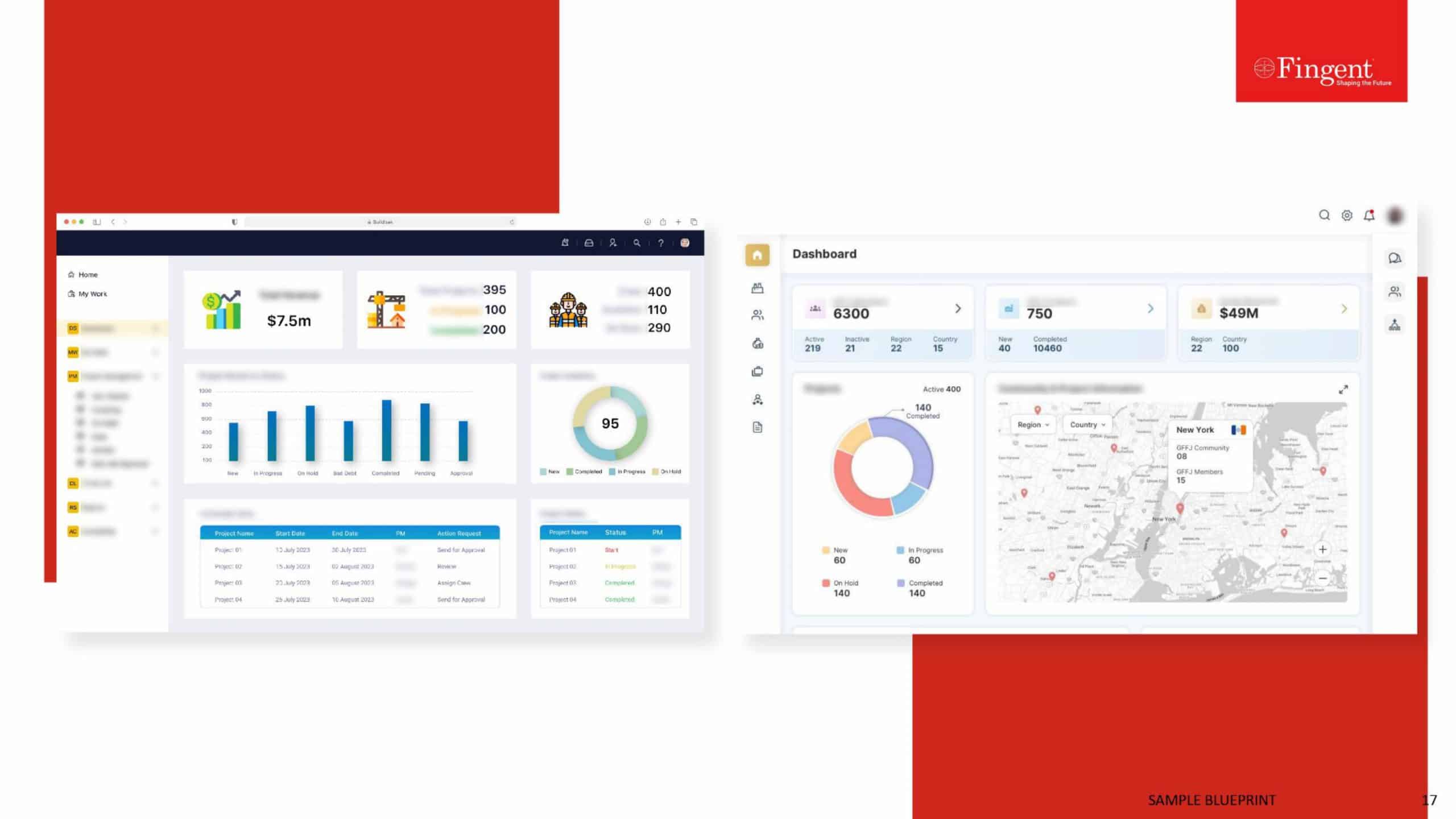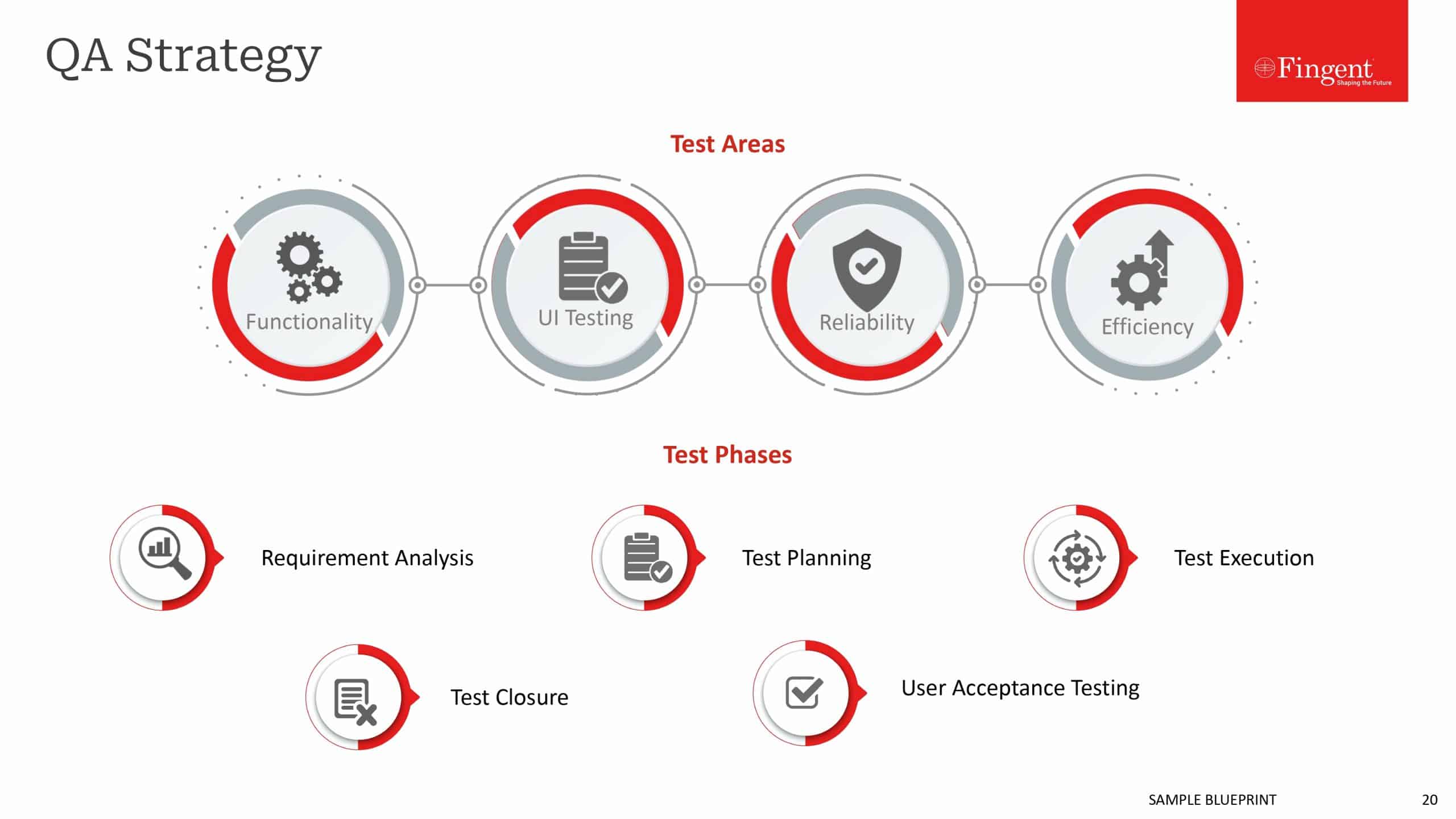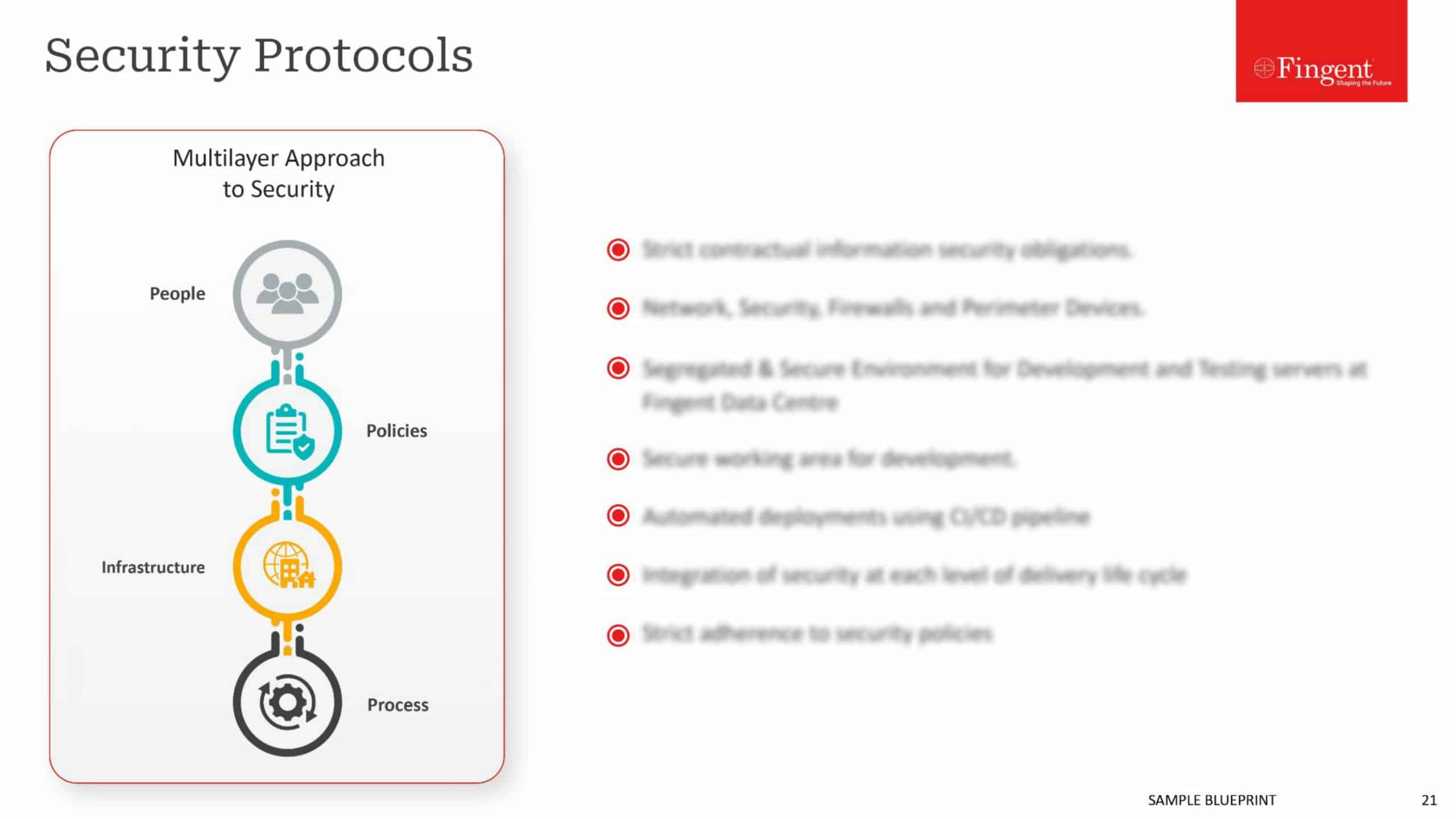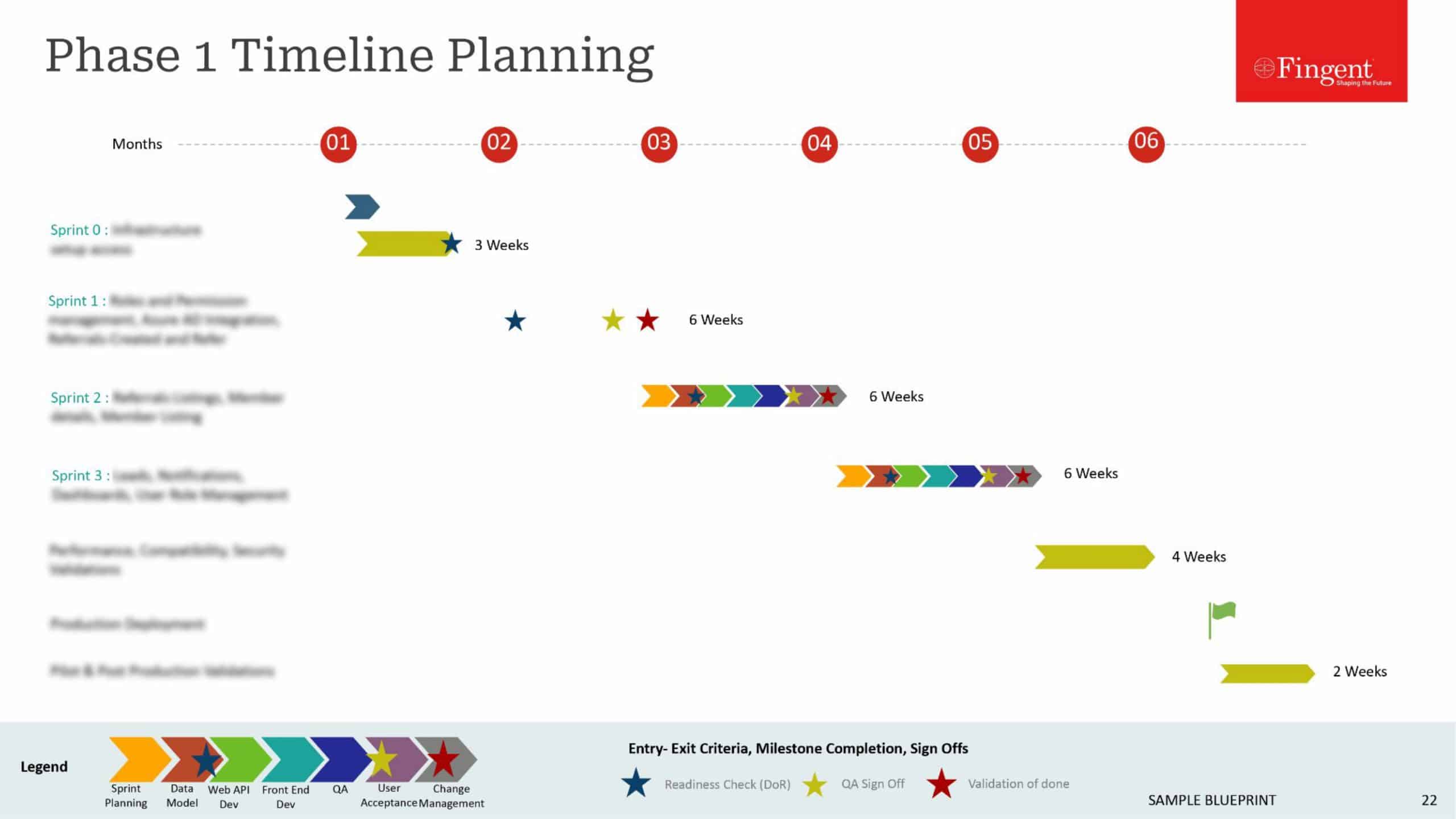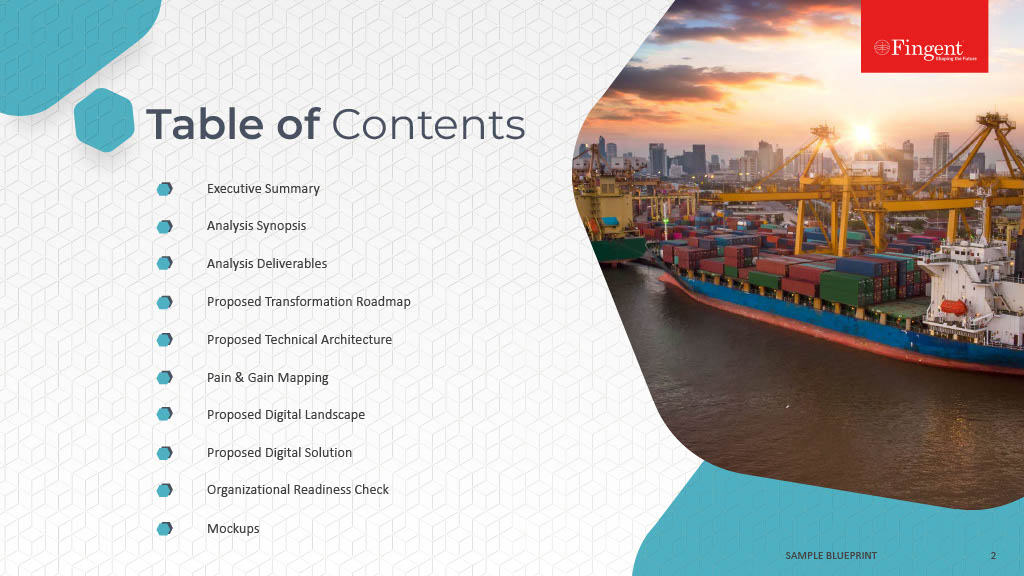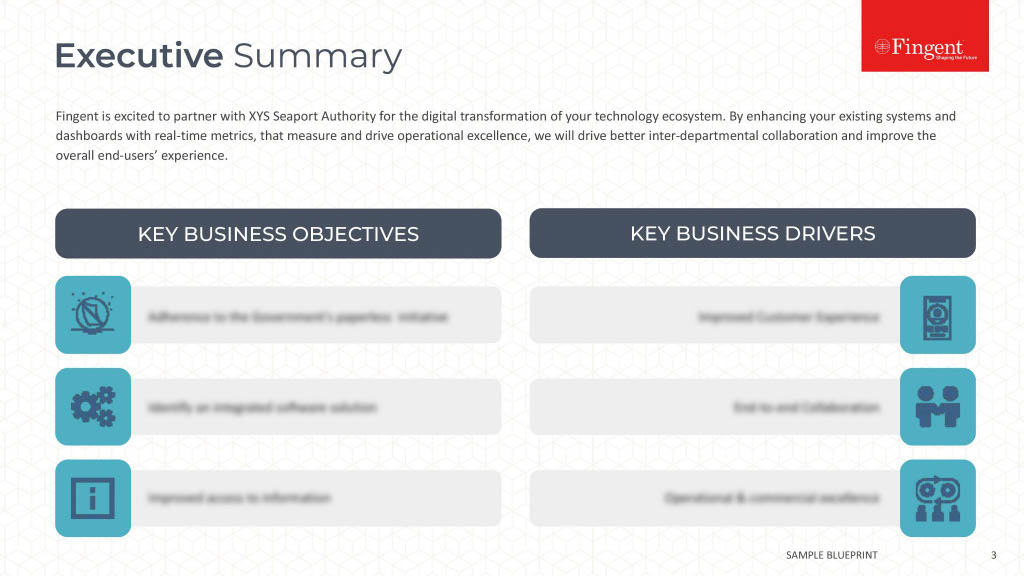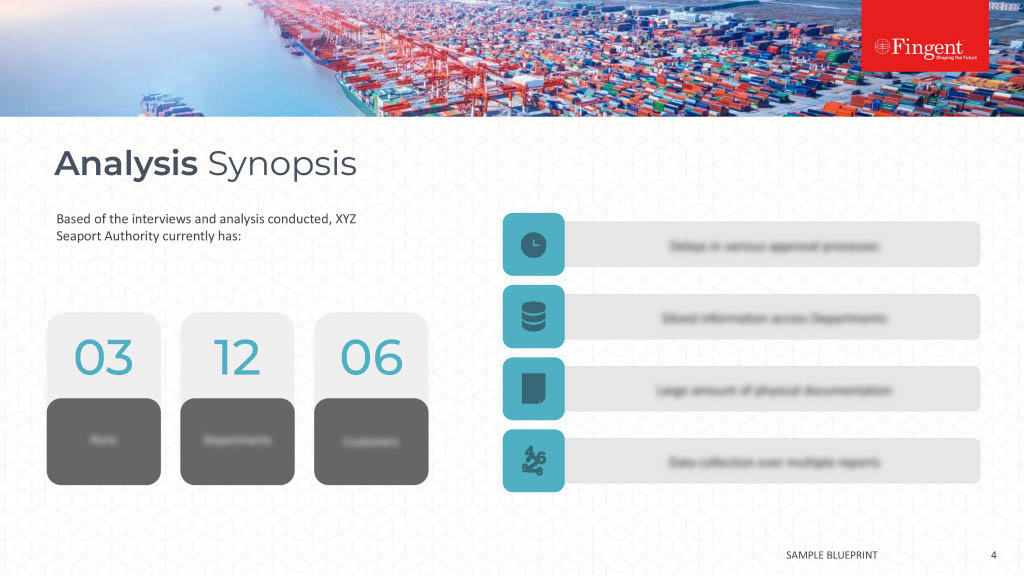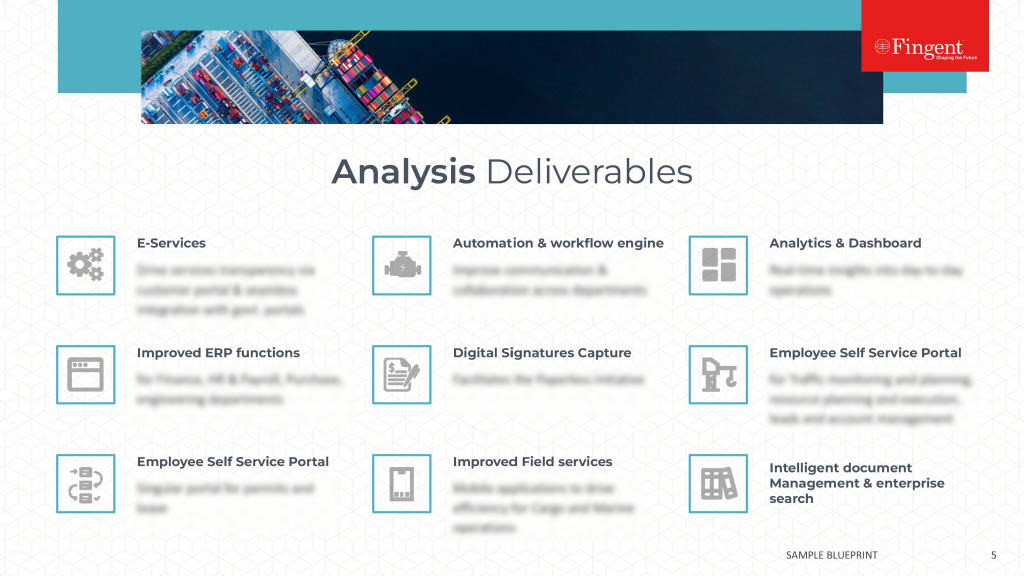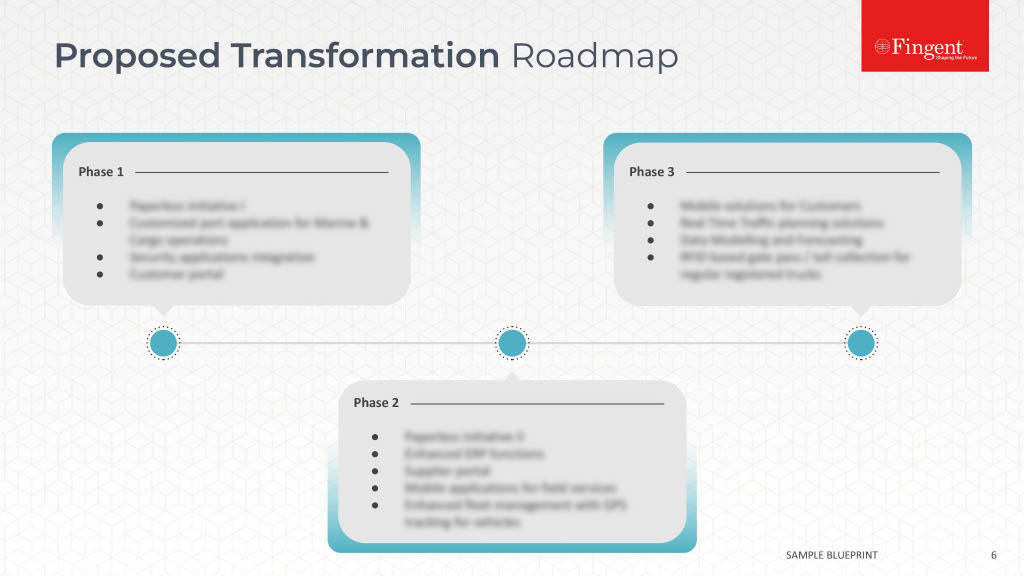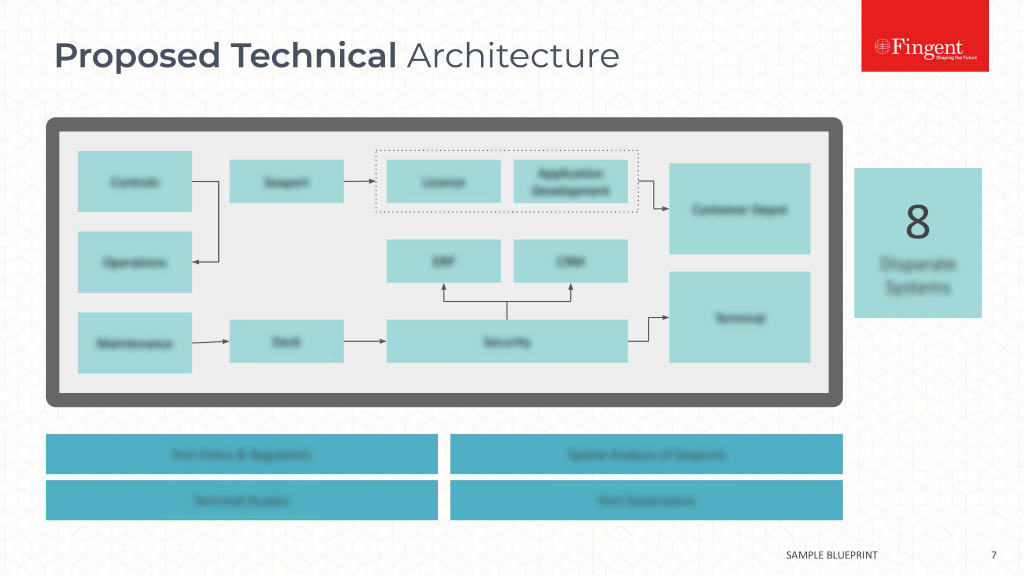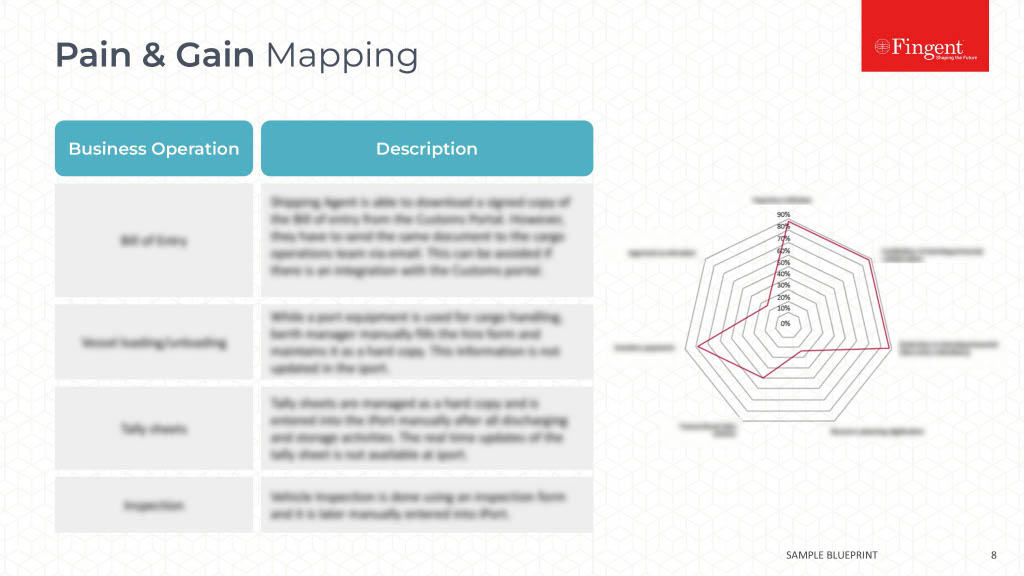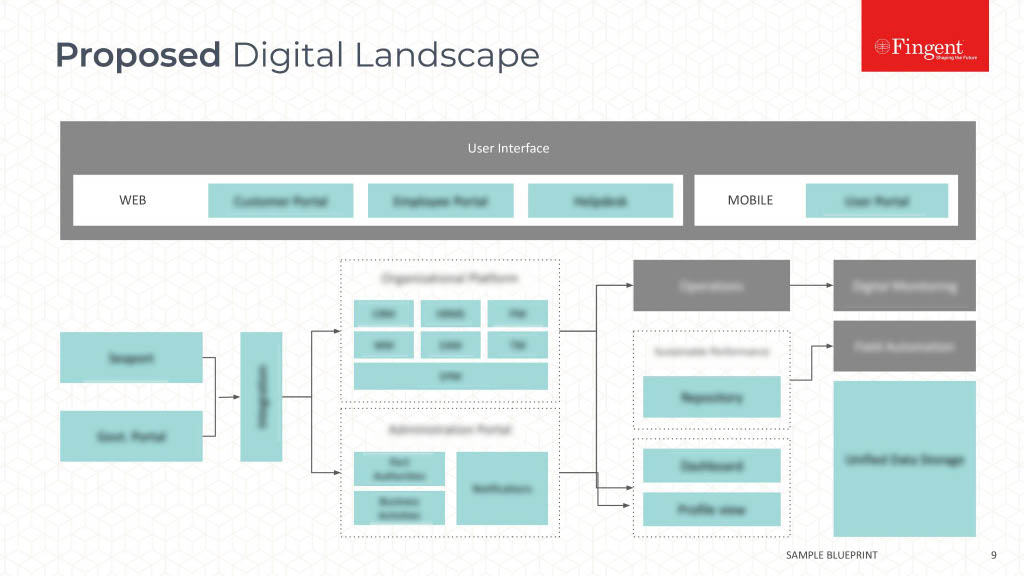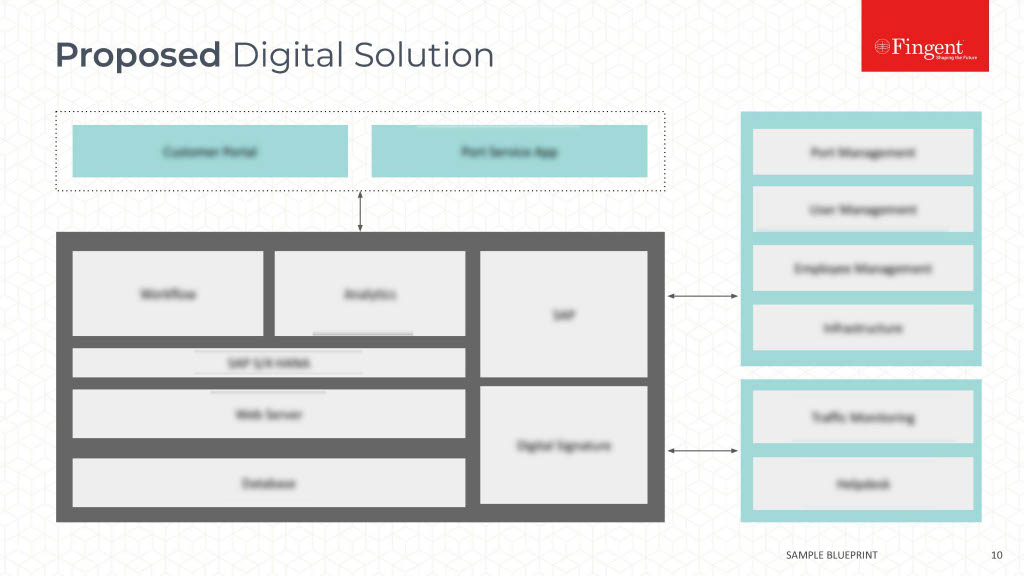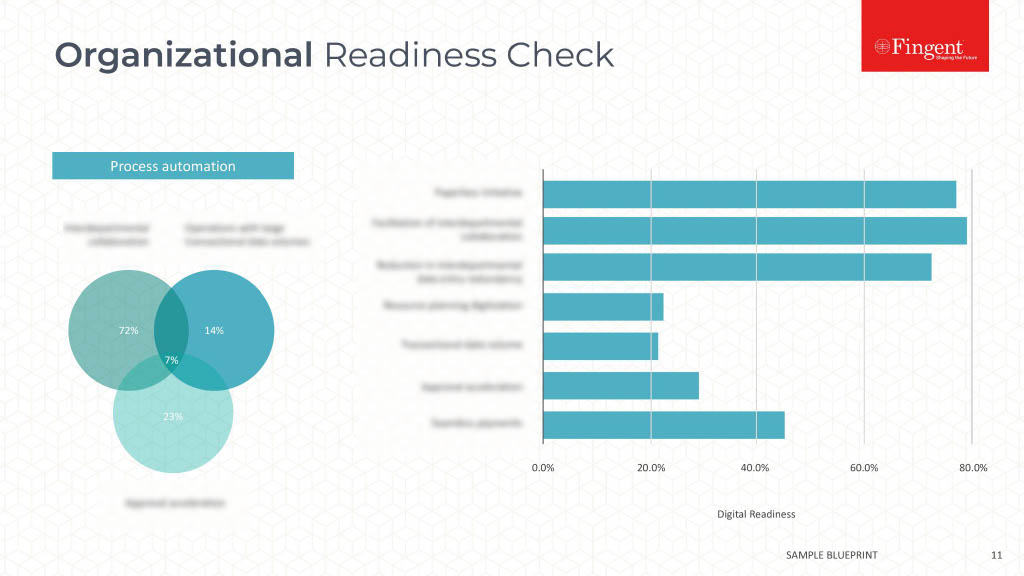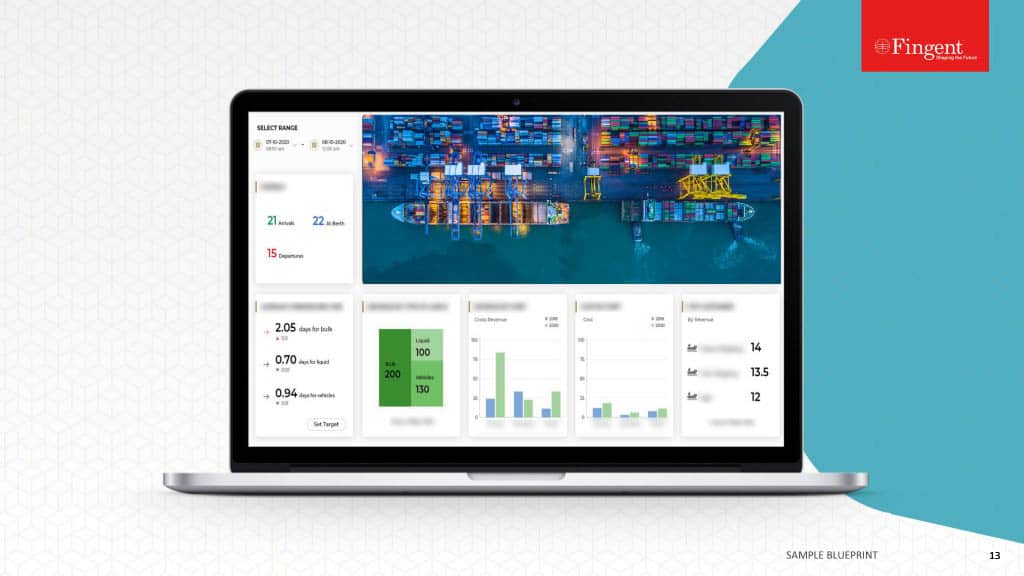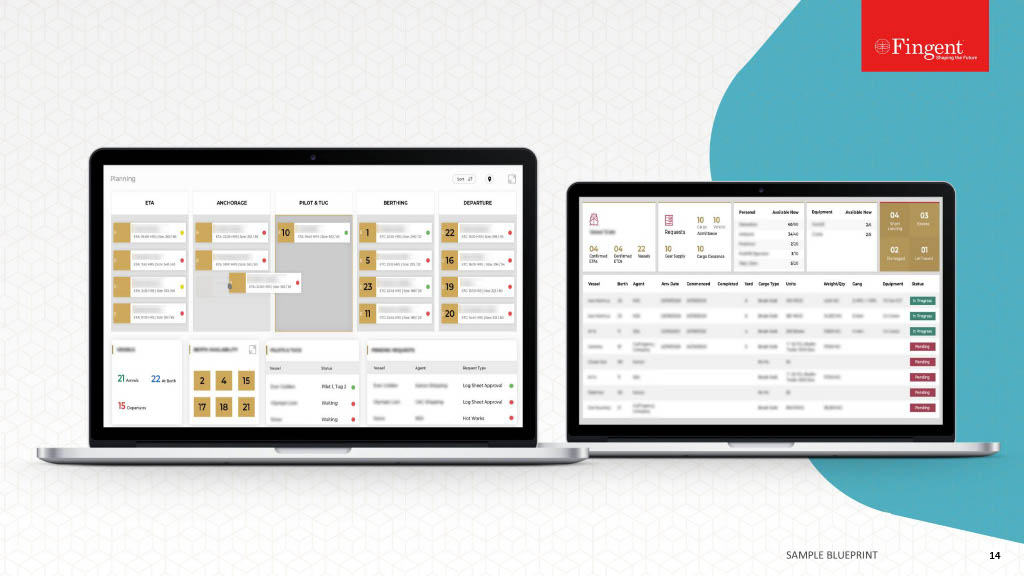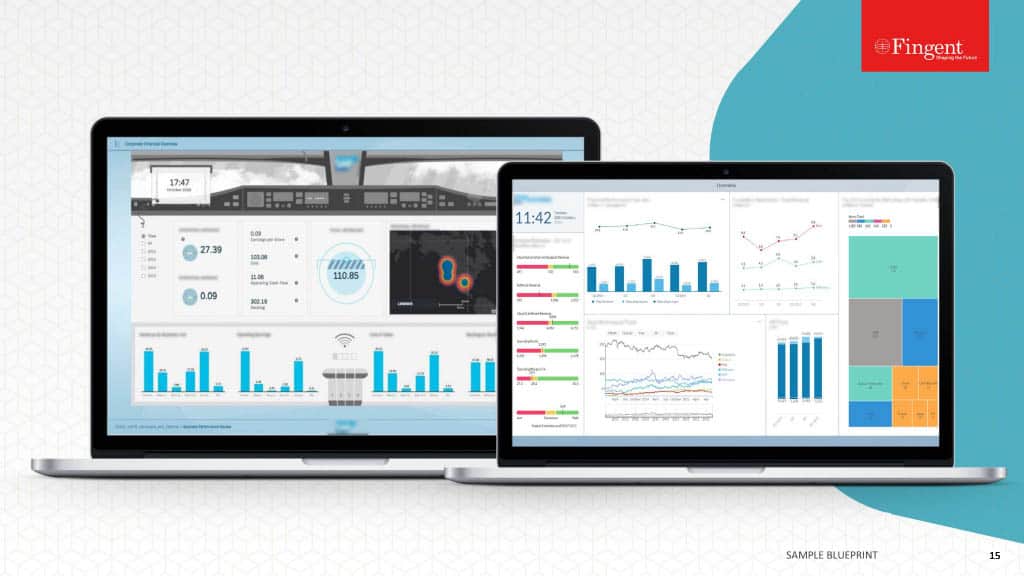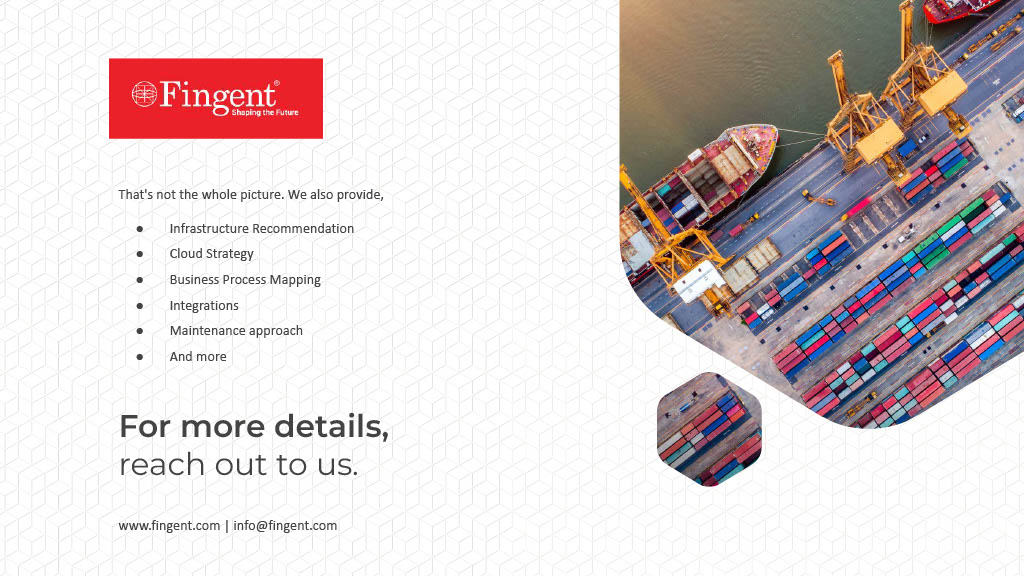Category: Business
One-size-fits-all? Not anymore, and definitely not when it comes to SAP S/4HANA! If you’ve made the choice to transition from your legacy systems to SAP S/4HANA, then you’re on the right track! It is surely the first step towards business transformation. However, the next step is crucial, i.e., finding the right path to SAP S/4HANA Migration. Many factors are unique to your business, including your current system layout, business needs, and long-term goals. Your migration path can be defined based on these factors to drive a successful transition journey. Explore the various paths to SAP S/4HANA migration in this blog, and identify what suits your business the best!
Ease Your SAP S/4HANA Migration Journey With Us
1. New Implementation (Greenfield Approach)
What Is the Greenfield Approach?
The Greenfield approach is essentially a completely fresh start with a new S/4HANA. This approach allows you to redesign and optimize your business procedures from scratch. It is also referred to as ‘a new implementation’.
The new implementation approach completely reengineers the system, which could simplify processes with a technological backbone. All systems are reinstalled and re-coded to fit business needs. The Greenfield approach is suitable for new and existing customers alike. It helps multifaceted and complex systems simplify their processes. Let’s explore some benefits and challenges of the Greenfield approach.
Benefits:
- Fresh start: During the Greenfield approach to transformation, existing in-house developments and third-party systems undergo a thorough examination. This helps business owners find the root cause of any shortcomings or mishaps. Re-starting with a clean slate can ensure that no incompetence is carried forward from legacy systems.
- Process Optimization: This approach and reinstalling systems also encourage business owners to redesign business processes from scratch. It eliminates the need to adjust old processes to conform to industry standards. It helps you focus on the current needs and standards and implement them. This way, you can fully leverage S/4HANA capabilities.
- Latest Features: Classical in-house developments in the core system are being replaced by new architectures. The Greenfield approach can achieve these architectures. The new architectures allow regular modernization through rapid updates. Instead of major upgrades, these architectures focus on subareas. They continuously update the system’s smaller, more integral aspects, and the entire system is completely renewed in a few years.
Considerations:
- Cost, time, and history: The biggest fear concerning the Greenfield approach is its cost. Starting from scratch may feel like a regression and require more effort and longer project timelines. Another note is that the new implementation may lead to losing historical context that is still relevant to your business.
- Change in Management: A clean slate entails a complete shift in management. This may affect employees and users as they must get accustomed to the new system.
2. System Conversion (Brownfield Approach)
What Is the Brownfield Approach?
Also known as System conversion, the Brownfield approach enhances your existing SAP ERP system. This approach lets you migrate to SAP S/4HANA without causing much disruption to your existing system. It upgrades only specific existing elements of the SAP landscape, such as interfaces to suppliers and partners. With the Brownfield approach, you can retain your systems’ customizations and historical data. The system conversion approach allows you to re-examine your existing processes and improve the lagging ones.
Benefits:
- Reduced Disruption: Whereas it might feel like your system is shaken to its core with the Greenfield approach, the Brownfield approach is gentler. There is minimal disruption to the users. The loss of previous customizations is also prevented.
- Cost-effective: This approach does not require a complete reboot, so the cost of implementation is low. It is also not time-consuming and is best suited for companies already associated with SAP ERP.
- Data Continuity: This approach only upgrades systems, leaving all historical data untouched. It also removes the need to migrate customizations.
Considerations:
- Technical Complexity: It is sometimes viewed as a stifling innovation. This is because all the previous data from your SAP ERP is being ported over without any modifications. This process requires thorough preparation and testing.
- Customization Clean-up: This approach requires users to manually clean up incompetent customizations and useless data to leverage S/4HANA fully.
Read more: Navigating SAP S/4HANA Migration Risks For Transformation
3. Selective Data Transition or Bluefield Approach
What Is the Bluefield Approach?
Greenfield and Brownfield, together, give birth to the Bluefield Approach. This approach, also known as the selective data transition, involves transitioning only selected data and processes to the S/4HANA system. It allows you to enhance certain areas while seamlessly retaining others. This hybrid approach takes on the best of both the parent “fields” and is becoming the most preferred approach.
The Bluefield approach best suits large-scale enterprises with extensive data and complex systems. With this approach, you can eradicate any problems you may otherwise face with the Greenfield and Brownfield approaches. You can handpick aspects of your system that you want modified. These can be enhanced while your current system remains unbothered by data cleaning and migration into the new system.
Benefits:
- Flexibility: Since you can select which aspects of the system you want updated, this approach is highly flexible and can be adjusted to meet your unique business needs.
- Process Improvement: You can enhance only the key processes that require optimization without re-starting from scratch.
- Data Control: Another key advantage is that you can pick what customizations to retain and which historical data to migrate. All the data tabs are under your supervision and control. This also benefits users, as they do not have a complete perceptual shift.
Considerations:
- Complex Planning: All the aforementioned benefits can be reaped only with thorough planning. Since you have to select parts of the system to upgrade, there is a lot of effort spent on preparation. The new system needs to be tested and validated. Data needs to be mapped accurately. Customizations have to be replicated. All this needs to be done before migration and usually calls for a team of experts or a third-party tool
- Balanced Approach: Balancing the old and new system elements without losing track of them is the challenge. Handling the aftermath of the implementation is where the real work begins. This includes expert Change Management to ensure smooth transitioning. Employees must be trained to handle this hybrid system as well.
4. Central Finance
What Is the Central Finance Approach?
Central Finance is a novel approach. It involves implementing S/4HANA Finance as a central system simultaneously with your existing ERP system. SAP Central Finance is a system that is used to receive data pivotally from multiple source systems. It then transforms and processes financial data at your pace, with your ERP in the background.
Benefits:
- Gradual Transition: Because it works with the backdrop of your existing ERP, it follows a phased approach. This allows users to move at their own pace, and migration happens according to the user’s wishes.
- Financial Insights: It establishes a streamlined source for consistent reporting and analysis. With real-time replication of financial data, it provides information for intelligent decision-making on the go and instant advice to enhance financial processes.
- Consolidation: All the financial data that flows into the system is consolidated into a unified view. This gives users centralized access to all relevant information. Users can thus analyze their transactional processes without any hassle.
Considerations:
- Integration Effort: Since data is received from multiple sources, communication must be robust between these sources and the central S/4HANA system. Maintaining seamless integration among these two can be time-consuming and require expert manpower.
- Limited Scope: As the name suggests, this system is bound to focus on the financial aspects of the business. This may not always be helpful and can lead to stunted migration later.
SAP ECC to SAP S/4HANA Migration: Why Act Now?
How to Choose the Right Path?
Every business has a perfect integration path fit. As you have seen, there are multiple approaches you can choose from. Whatever path you decide to take will depend on several other factors. Factors such as your current system landscape, business goals, project timeline, and company budget. Below are a few things you should consider before deciding which integration path to take.
- Assess Current System: Assess your current state – your ERP system, customizations, data quantity, and quality. Examine how each path will impact your company’s efficiency and try to predict what your business will look like after implementation. Assessing your budgets, project timelines, and current system landscape is essential.
- Define Objectives: Take a step back and reevaluate your business objectives and goals. Draw a strong link between your business goal and S/4HANA. This will help you clarify your priorities before you move forward.
- Consult Stakeholders: Ask for advice amongst your most trusted. Involve your key stakeholders from various departments in your business. Consider their opinions and ensure that they are on board with the implementation plan. They will need to put effort into gathering input and preparing for the migration.
- Plan Thoroughly: A well-thought-out plan is least likely to fail. Don’t spare any effort in developing detailed, foolproof migration plans. They should include timelines, resource allocations, and risk mitigation strategies. Always be prepared with a post-implementation plan as well.
- Engage Experts: Consider involving SAP consultants or partners. Their expertise in S/4HANA migrations will certainly guide you through the process.
Transforming Your Business with Fingent
Statistics show that, in 2024, over 20807 companies worldwide will have started using SAP S/4HANA as an Enterprise Resource Planning (ERP) tool. The question then is not if but when you will migrate.
Granted, the process of migration is never an easy one. Nonetheless, transitioning to SAP S/4HANA is a journey worth taking. It can make a monumental difference in your business capabilities. By considering and learning about the different integration paths, you can become more prepared for this change. By carefully planning your approach, you can ensure a seamless transition that meets your unique needs. Regardless of your method, moving to S/4HANA will boost your organization for future growth and progress. Begin your transition process today and enjoy the benefits of S/4HANA to the fullest. With decades of experience in helping clients with SAP products, our team at Fingent can help you find and journey through the best migration path for your business. Let’s talk.
Stay up to date on what's new

Featured Blogs
Stay up to date on
what's new



Talk To Our Experts
What can Artificial Intelligence do for your Retail Business? AI can boost your service and operational capabilities with intelligent data, effective processes, and smart analysis. Imagine having rich insights into customer behavior, future trends, and demand variations. You will never go out of stock! You can shoot targeted marketing emails, and your customers can always get what they want and how they want from your store! AI-powered smart shelves, voice assistants, fraud detection, and pricing strategies are paving the way for a huge revolution in the retail industry. This blog will walk you through some of the major transformations of AI in Retail and how to leverage them in your business for greater success. Read on!
How Can AI Benefit Retail Companies?
The effect of AI on the retail sector is significant and revolutionary. Here are key benefits for retail companies:
1. Total Visibility: One Truth for Retail Operations
Retailers can utilize predictive analytics to predict demand with high accuracy. They will be able to maintain accurate inventory levels, with no longer empty shelves or excess stock. This would mean that the right products will be available even with changing demand.
2. Customer Centricity: Enhance Shopping Experiences
Think of AI as a useful assistant that anticipates your customers’ needs before they realize them. AI tools include chatbots and recommendation engines. These tools greatly improve and customize the shopping experience. For example, a suggestion tool reviews a customer’s online activities and past purchases. It then uses this information to recommend products they may be interested in purchasing.
3. Bias for Action: Turning Data into Informed Decisions
AI transforms data into actionable insights. It empowers retailers to adapt swiftly to customer preferences and adjust prices in real-time. This ensures competitiveness and profitability without sacrificing satisfaction.
4. New Business Models: Innovate with AI
AI enables innovative business models beyond physical and online stores. Virtual stores offer immersive experiences. AI-driven automation uses drones and robots. This revolutionizes supply chains with faster and more reliable deliveries. Plus, AI changes data into useful insights. It enables retailers to adjust quickly to customer preferences and change prices instantly.
Discover New Possibilities In Retail with AI
How Can AI Address Complex Challenges in the Retail Industry?
AI is revolutionizing the retail industry by tackling complex problems with creative answers. AI is transforming the industry by improving customer contentment and streamlining operations. Let’s examine how AI tackles some of the most pressing problems in the retail sector.
1. Contactless shopping experience
AI simplifies and enhances contactless shopping for increased convenience. AI-powered visual technology is employed in self-service checkout terminals. It equips intelligent shopping carts for automatic scanning and payment of items. Thus enhancing both convenience and safety.
2. Predictions regarding the need for products and changes in the market.
Retailers often find it hard to keep up with predicting demand. Such ignorance leads to either having too much merchandise or insufficient merchandise. AI utilizes predictive analytics to analyze past sales, market trends, and consumer behavior. AI helps retailers predict future demand to manage optimal inventory levels effectively. For example, artificial intelligence can predict increased demand during the holiday season. This prevents stock shortages and enhances customer satisfaction.
3. Tailored Customer Experiences
Customers anticipate customized engagements, and Artificial Intelligence provides them. AI collects data from browsing histories and purchase patterns. Using this data, it now makes personalized recommendations. This customization improves the shopping journey, boosts sales, and cultivates customer loyalty.
Read more: Leading the Powerplay With Retail Business Intelligence
4. Automated Management of Inventory
Handling inventory is challenging, especially for big retailers. AI automates the procedures related to managing inventory. AI-powered systems constantly track inventory levels, forecast when restocking is required, and automatically place orders. Consequently, they help keep shelves stocked and reduce overstock.
5. Optimizing prices
Establishing the correct price increases revenue and helps maintain competitiveness. AI algorithms analyze competitor prices, demand changes, and market conditions. They suggest optimal pricing tactics. Dynamic pricing models adjust prices instantly. This attracts budget-conscious customers and maximizes revenue when demand is high.
6. Management of the supply chain
Effective supply chain management is crucial for retail success, and AI greatly improves this. AI systems analyze data from various supply chain points, identifying congestion. They also forecast potential interruptions. For example, AI predicts delivery delays due to weather conditions and recommends alternative routes. This proactive strategy reduces interruptions and guarantees efficient functioning.
7. Detection of fraudulent activities
Retailers are always vulnerable to potential fraud risks, leading to possible substantial financial losses. AI enhances fraud detection by examining transaction patterns and pinpointing irregularities. Machine learning algorithms can identify abnormal behavior. For instance, it can tag a sudden return increase or questionable purchasing tendencies. This enables retailers to take action and stop fraud quickly.
What Are Some of the Most Common Use Cases of AI in Retail?
In-Store Experience Enhancements with AI
AI-powered smart shelves can enable real-time inventory tracking. This not only allows you to keep track of stock but also provides insight into customer interactions with products. Of course, this empowers retail businesses to better forecast demands, strategize pricing, and improve product placements while improving the overall in-store customer experience. Cashless stores are another AI trend that is increasingly gaining traction in the retail industry. Automated payment systems eliminate long queues at exit counters, giving customers a hassle-free shopping journey.
AI Assistants for Smooth Customer Management
AI can be your customer’s new sales associate. AI-powered voice-activated assistants can help customers with queries, purchase support, and more. AI can also enable image search of items, making shopping in stores less hassle. Automated support, chatbots, and sentiment analysis give customer services a strong boost, paving way for improved customer retention rate.
Read More: Top AI Trends Shaping Enterprise Success
What Is the Future of AI in Retail?
AI transforms the retail industry through customized advertisements, chatbots, and dynamic pricing. As emphasized in McKinsey’s report, customers now anticipate personalized experiences. AI assists retailers by examining data within physical stores. It also provides flexible pricing and information on customer actions. Over 71% of retail customers expect personalization. 76% of customers seem frustrated when there is no personalization.
AI enables business executives to improve supply chain efficiency and upgrade inventory control. Retailers utilize ‘smart warehouses’ to monitor inventory in real-time, which improves effectiveness and efficiency.
- A Fresh Approach to Shopping: Combining AI and edge computing transforms self-checkout experiences. Many retailers use AI servers and high-resolution cameras to watch over customers at the checkout.
- AI’s complete capacity in the retail sector: AI converts unused videos into useful information, increasing sales and revenue. It helps with omnichannel integration and improves customer service by using AI chatbots.
- Outside the manufacturing area: AI improves warehouse and supply chain operations by maximizing efficiency and minimizing waste. Shared data insights improve stock management and resource allocation. AI simplifies routing and cold chain management in warehousing and enhances inventory control in supply chain operations.
Find More Opportunities in Retail with Custom AR Applications
How Can Fingent Help Your Business Flourish With AI?
Fingent provides many AI solutions to advance your business to higher levels. If you aim to boost efficiency, enhance customer satisfaction, or gain data insights, our specialists are here to help. With a proven track record, we excel in delivering tailored AI solutions. Our cutting-edge technology ensures seamless integration for your business needs. We strive for top results in every project we undertake.
Fingent stands by you as your dedicated success partner, offering a wide range of services. Contact us now to find out more!
Harness the potential of AI with Fingent and transform your business! Our customized solutions enhance efficiency, increase productivity, and support growth. Lead the future with Fingent AI solutions instead of just adapting to it.
Stay up to date on what's new

Featured Blogs
Stay up to date on
what's new



Talk To Our Experts
Maximize productivity and minimize uncertainty! That’s what Artificial Intelligence promises the Supply Chain and Logistics industry. The fragility of the supply chain is not unknown to industries. Delays, stoppages, and complexities in the supply chain are a few limitations businesses are striving to overcome. Operational efficiency, intelligent decision-making, and continuous improvement must be maximized. Thankfully, AI helps do just that. This blog will take you through the top benefits businesses can derive with AI in Supply Chain!
Why Is Now the Best Time for Supply Chain and Logistic Firms to Adopt AI?
The global trade scene and geopolitical risks have not been kind to the supply chain. A 2023 Annual Supply Chain Report revealed that events around the world continue to have a detrimental impact on it. These include political upheavals, climate-related events, supply chain legislation, and more. Internally, there are issues to deal with as well. A lack of governance and data management, labor strikes, and communication hurdles have proved challenging.
Not everything is bad news, though. These harsh conditions have built resilience and determination in supply chain and logistics organizations worldwide. A 2024 KPMG study of supply chain trends says: “Enabled with a raft of technology developments, a new paradigm is emerging in supply chain management. One where organizations can respond quicker to day-to-day requests, proactively address problem-solving, and reduce errors and inefficiencies.”
Businesses are becoming wise to the situation and are reaping benefits. According to a McKinsey report, leveraging AI has helped businesses enhance logistics costs by 15%.
AI helps companies gain a unique competitive advantage in supply chain management and logistics operations. It can install advanced algorithms and large-scale data analytics as an emerging technology. This simplifies supply chain workflows and boosts decision-making processes. Some other perks of leveraging AI-powered technologies are accurate forecasting, inventory management, optimization of transportation functions, improvement of flexibility and agility, and enhancement of customer satisfaction. These are all the ingredients you need to get your supply chain processes back on track.
The time to build resilience with the help of technology is NOW!
Explore More Business Opportunities With Artificial Intelligence
What Are the Top Benefits of Using AI in the Supply Chain?
AI can bring operational efficiency, on-time delivery, accurate predictions, risk management, and more to the supply chain and logistics management. Here are the top benefits industries can reap by deploying AI for logistics.
1. Reduced Cost
AI has the power to automate tasks. This gives a power boost to the human workforce. . It frees them up for higher-value activities and takes over the burden of mundane labor. This optimization of labor practices will reduce labor costs while increasing efficiency. AI-powered forecasting can help maintain optimal inventory levels, decreasing any risk of stock-outs and loss of sales. This directly contributes towards cost savings
2. On-Time Delivery
AI systems can process large amounts of data in real time. It can recognize patterns, enhance inventory levels, and accurately predict demand. This predictive ability ensures on-time delivery, thus enhancing operational efficiency. Generative AI can use algorithms to analyze transportation routes and optimize logistics scheduling. This will, in turn, improve delivery times and reduce fuel consumption and transportation costs. Another major benefit is real-time tracking and updates on orders. This provides transparency with customers that will increase their confidence and satisfaction.
3. Accurate Management And Planning
Predicting future demands is vital for effective stock and product management. AI algorithms can forecast product demand for specific seasons of the year. This enables companies to make well-informed decisions about managing inventory. As for logistics firms, AI can enhance supply planning. By analyzing factors such as production schedules, sales data, and costs. This analysis helps businesses to plan warehouse functions. This includes managing stock levels and surplus inventory. Thus reducing costs and providing control over expenses. A survey by McKinsey showed a reduced cost expense of 15% in logistics management. Early adopters of AI-powered supply chain management saw this change.
4. Risk Management
Leveraging AI for supply chain management and logistic operations can reduce risk. AI bots can be used effectively in this regard. They do this with the application of advanced analytics and scenario modeling. This enables businesses to create complex contingency plans and adapt risk mitigation strategies. Generative AI measures the impact of any chain of damage. This will, in turn, allow companies to respond and use effective mitigation strategies. AI-powered supply chain monitoring tools work together to identify any risks. Early detection alarms, for example, enable timely intervention and reduce impact on performance.
AI Use Cases In Logistics
Artificial Intelligence controls data and uses machine learning to optimize the flow of goods. With algorithms to identify patterns, relationships, and trends, AI enables accurate predictions and recommendations. Here are some use cases to show how this can help businesses:
1. Bullwhip Effect Prevention
A small change in demand can create catastrophic ripples across the supply chain. Effective demand forecasting helps mitigate this bullwhip effect. Demand forecasting utilizes predictive analytics to estimate customer demand forecasts. It does this by analyzing historical data in real-time. With this method, businesses can improve their decision-making processes and workforce planning. Thus, AI-powered demand forecasting can reduce error rates, leading to improved accuracy in demand prediction. Manufacturers can manage every little detail, like the number of vehicles dispatched, and thus reduce operational costs.
According to a Gartner study, demand forecasting is the most used ML application in supply chain planning. The study also highlighted that 45% of businesses have already implemented this technology, and 43% plan to use it within the next two years.
2. Automation Warehousing
Reports estimate the warehouse robotics market will reach USD 10.5 billion by 2028, accompanied by a CAGR of 11.4% during the forecasting period. The need for operational quality is the fueling force that drives this growth. Amazon is a great example of this change. The giant retail company Amazon has close to 200,000 robots functioning in its warehouses. These robots help employees pick, sort, transport, and stow packages.
Computer vision technology allows businesses to identify damaged goods. This ensures quality control in warehouse operations. Logistics managers can also regulate the size and type of damage. This will help them take appropriate action. Predictive maintenance is another technology that is very beneficial to a company warehouse. It can predict machine failures in the factory. It does this by processing real-time data gathered from the IoT sensors.
3. Back Office Management
Every company has a back office that handles the brunt of the workflow. It manages largely repetitive tasks, including bill of lading, invoice maintenance, document processing, and customer services. AI can transform these processes into simpler tasks.
An example is the invoice of rate sheet documents. They manage communication within the workspace. With the help of AI, this process can be automated and made efficient. Accurate data input, error reconciliation, and document processing make this possible. Hyperautomation can help here as well. It combines Artificial Intelligence with robotic process automation and process mining. Together, they make the automation process seamless.
Customer service chatbots analyze customer experience with chatbot analytics metrics. This helps them understand the customer’s needs and respond accordingly, leading to higher customer satisfaction rates.
4. Sales & Marketing
Predictive lead scoring is a subfield of AI and is invaluable to the sales function. It uses machine learning to calculate a score for open leads based on historical data. Lead scoring will ensure that sales reps can focus on the right prospects for the company. This AI-powered tool can assign appropriate scores to leads based on their profile, behavior, and interests. These algorithms can process data. Thus, they can predict which leads will convert into paying customers.
AI can also analyze sales and marketing. With the help of AI-powered tools, logistics service providers can process customer behaviors. This helps them predict the customer’s next move. They can also track fluctuations in the market, enabling logistics service providers to be alert and make data-driven decisions.
Reshape Customer Experiences with AI & ML
What Are the Top Trends in AI for Supply Chain?
IoT, Hyper-Personalization, Robotics, and Natural Language Processing are some of the top trends businesses can expect to see and implement going forward. Here are the details:
1. Better Integration With The Internet Of Things (IoT)
Internet of Things (IoT) devices allow for real-time tracking of products in a supply chain. When combined with advanced AI technology, they can perform a wide range of tasks. These tasks include optimization of routes, reducing delays, and enhancing supply chain management.
New technologies, such as digital twins, will allow companies to develop a digital model of the product. This can help companies create a virtual representation of their supply chain model. Drones are also equipped with IoT sensors to test deliveries. Studies estimate that around 70% of urban deliveries are drone-based package delivery networks.
2. Autonomous Supply Chain Systems And Robotics
A 2023 Gartner study predicts that 75% of companies will install cyber-physical automation in their warehouse operations by 2027. The use of robotics and AI-driven systems will streamline the warehouse processes, thus reducing reliance on labor and resources.
Some companies, like Amazon, have already installed autonomous mobile robots (AMRs). In the future, many more companies will follow suit, and we can expect to see AMR technology bloom. These autonomous robots will have systems working 24/7, thus implementing a higher level of quality and productivity.
3. AI-Driven Hyper-Personalization Of Service
The increased priority to customer service is a trend seen throughout innumerable industries. AI can help with this by analyzing customer data and preferences. Businesses can better curate their services to personalized needs. With the introduction of AI, hyper-personalization will grow further. It will encourage manufacturing managers to leverage Machine learning. This will automate manufacturing adjustments that will, in turn, improve customer experience. According to reports, AI-driven forecasting can improve supply chain resilience. It has the potential to reduce stockouts by 50%.
4. Adoption Of Advanced AI Technologies (NLP, Annss)
More and more companies will recognize the potential of high-level AI systems. They will rely on Machine Learning, deep learning, and natural language processing. We will see a rise in data analytics quality and, by extension, better decision-making.
Machine Language has an unparalleled ability to process large amounts of data to recognize trends. It will improve accuracy when it intercedes with forecasting inventory needs.
Artificial Neural Networks (ANNSs) are subfields of AI that use deep learning and ML. They detect anomalies and predictive maintenance needs. NPL will also play a big role in enhancing workflow. Thus improving communication between team members, employees, and machines.
How Can Fingent Help Future-Proof Your Supply Chain And Logistics Firms With AI?
At Fingent, we recognize and understand AI’s transformative power. We expertly maneuver its ability to optimize your supply chain and offer curated custom logistics software development services. Experts at Fingent understand what is needed to implement AI solutions effectively for your business. They specialize in AI technologies like Machine Learning, Natural Language Processing, and Robotic Process Automation. We can thus help you tap into the latest advancements in technology.
When you work with Fingent, you get a dedicated team of experienced professionals who can guide you with expertise in logistics management and advanced AI services. Connect with us today to develop customized solutions for streamlined operations, seamless processes, and competitive advantage.
Stay up to date on what's new

Featured Blogs
Stay up to date on
what's new



Talk To Our Experts
How can a custom payment processing solution change your business?
The benefits are many: streamlined payment processes, safe transactions, easy fraud detection, and better customer experience. However, you might wonder why choose a customized solution when ready-made software can easily fetch these advantages. Tailor-built applications can do more! They offer seamless integrations, personalization, scalability, and distinct solutions that cater to your unique business needs.
In this five-minute read, you’ll find more about why you implement a custom payment processing solution for your business!
What Business Challenges Do Payment Processing Systems Alleviate?
1. Late Payments
Late payments pose a persistent challenge for enterprises. They puncture cash flows and strain client relationships. Custom payment processing solutions tackle this issue. Automated invoicing, recurring billing, and payment reminders help ensure timely payments. Streamlining payment collection enhances cash flow management, mitigating delays and improving financial planning.
2. Manual Mishaps
Manual glitches in payment processing are a hassle. They can brood discrepancies in financial logs and regulatory tangles. Custom solutions harness automation to excise manual data input. This helps in seamlessly integrating with accounting frameworks and ERP software. This, in turn, ensures precision and uniformity in financial dealings. It also economizes time and resources while enhancing accuracy.
3. Security Concerns
Security is crucial when handling payments. With cyber-attacks increasing each year, protecting payment information is critical. Customized solutions enable security measures like tokenization, encryption, and following PCI compliance rules. These protections help keep payment data safe during transactions. They also reduce the risk of fraud or identity theft, which makes customers feel more confident about using the service.
4. Lack of Integration
Fusing payment processing systems with existing infrastructure poses a puzzler for enterprises. Customized solutions are architected to blend seamlessly with various business systems, including CRM platforms and e-commerce portals. This amalgamation streamlines operations, heightens visibility, and enhances decision-making processes.
A Unified Self-service Customer Portal Transforming Payment Experience
What Are the Top Benefits of Payment Processing Solutions?
Let’s now unveil the metamorphic might of payment processing solutions. More importantly, see their potential to revolutionize enterprise financial functions.
1. Cash Flow Augmentation
Efficient payment processing bolsters cash flow by automating invoicing, payment collection, and reconciliation. Timely payments ensure a steady fund inflow. This is important in meeting fiscal commitments, investing, and sustaining liquidity.
2. Security Supremacy
Payment processing solutions ensure robust security, including encryption, fraud detection, and safeguarding sensitive data. Adherence to standards like PCI DSS fosters trust among customers and stakeholders.
3. Client Contentment
Frictionless payment encounters amplify client satisfaction and allegiance. Various payment alternatives, secure checkouts, and instantaneous confirmations ensure this. They truncate friction and amplify repeat transactions.
4. Reporting and Analytics
Access to real-time data and analytics catalyzes informed decision-making. Insights into transaction volumes, trends, and consumer conduct empower enterprises. They can pinpoint growth prospects and fine-tune strategies.
Why Choose Custom Over Off-the-Shelf?
Businesses frequently grapple with the choice between off-the-shelf and custom payment processing solutions. Granted, off-the-shelf options provide convenience and cost-effectiveness. However, they may fall short of meeting unique organizational needs. In contrast, custom solutions are crafted to fit specific requirements, offering unmatched advantages.
Custom payment processing solutions allow for flexibility and scalability. They empower enterprises to adapt and evolve in the face of fluctuating market dynamics and consumer demands.
Custom solutions provide unmatched flexibility to accommodate singular business processes and demands. They employ personalized workflows, user interfaces, and integrations with extant systems and third-party applications. Custom solutions harmonize these tools with organizational aspirations and priorities. This optimizes efficiency, augments productivity, and catalyzes innovation across the payment realm.
Limitations of Off-the-Shelf Solutions
Off-the-shelf solutions may seem like a quick and cost-effective way to get started, but they often come with limitations, especially in terms of functionality, customization options, and scalability. Businesses may find themselves constrained by rigid workflows and limited integration capabilities. Support for specialized payment methods or industry-specific requirements isn’t provided, either. Reliance on third-party vendors for updates, upkeep, and support can be a hassle. It can engender dependency dilemmas and potential hiccups in business operations.
On the other hand, custom payment processing solutions remove this element. They offer greater sway, flexibility, and ownership over the payment setting. They help enterprises optimize processes, strategically innovate, and stay ahead of the curve.
Deliver Top-Notch Banking Experiences to Your Customers!
How Do I Strategize A Custom Payment Processing Solution?
Let’s explore the strategic blueprint behind crafting custom payment processing solutions. Also, take a look at how they cater to unique business requirements:
1. Understanding Business Requirements
Businesses must first grasp their specific needs and objectives. A thorough analysis of current processes, pain points, and future goals is key. A deep understanding of business requirements is essential here. Whether its optimizing invoice management, enhancing security protocols, or integrating with existing systems.
2. Scalability and Flexibility
In today’s dynamic business landscape, scalability and flexibility are crucial. This holds true in a custom payment processing solution as well. Priorities are accommodating increasing transaction volumes, expanding product lines, and evolving business models. Adopting scalable architecture and flexible design principles can future-proof the payment processing ecosystem.
3. Compliance and Security
Compliance and security are paramount in financial transactions. A custom payment processing solution should adhere to regulatory requirements, including PCI DSS, GDPR, and industry-specific standards. Robust security measures such as encryption and multi-factor authentication are vital. They safeguard sensitive payment data and mitigate the risk of fraud and data breaches.
4. User Experience
User experience (UX) is critical for the success of any payment processing system. A seamless and intuitive user interface is important. This, coupled with streamlined workflows and clear communication, enhances usability and efficiency. Prioritizing UX can help in many ways. Organizations can improve adoption rates, reduce user errors, and enhance customer satisfaction.
How Can Fingent Help?
Fingent specializes in crafting custom software solutions. This includes personalized payment processing systems tailored to our client’s unique requirements. We have extensive experience in the field. Streamlining payment operations, bolstering security, and fostering business growth are our forte.
Our approach starts with a deep dive into our clients’ needs, objectives, and challenges. We work closely with stakeholders to get the complete picture. We gather insights, pinpoint pain points, and establish success metrics. Experts are handpicked, drawing on our technical expertise and industry knowledge. We then design and develop bespoke solutions that precisely address our clients’ needs. Consider this case study:
These features enable effortless payment experiences for customers, ensuring security and reliability. This collaboration exemplifies Fingent’s commitment to delivering innovative custom software solutions. Our strength is in tailoring these solutions to meet the unique needs of our customers.
Get Custom, Get Smart!
Payment processing systems tackle vital business challenges like late payments and manual errors. This is achieved through customized solutions for improved cash flow and enhanced security. Strategic planning and choosing the right partner are key.
Leverage Fingent’s expertise! Transform your payment processes and unlock new opportunities for success. See how our custom software solutions can empower your organization to thrive in the digital economy. Contact us today.
Stay up to date on what's new

Featured Blogs
Stay up to date on
what's new



Talk To Our Experts
Achieving perfection is no easy process. It is not impossible either. It takes a lot of effort and hard work but with the help of Artificial Intelligence, this process can become a lot smoother. AI has undoubtedly proved itself in innumerable industries, and the financial market is no different.
With AI, Financial sectors are seeing a massive transformation in how they work, process documents, make decisions, predict market changes, and even mitigate risks.
As Dan Schulman, the CEO of PayPal once said, “We’re not trying to reinvent the wheel; we’re trying to perfect it.”
In this blog, we will learn how Artificial intelligence is shaping the future of financial services.
What Does Artificial Intelligence Mean to the Financial Service Sector?
First, it’s imperative to understand the relationship between Artificial intelligence and finance. Almost all major banks state that they use AI for various functions. It supports financial services like automated customer assistance, risk management, and fraud detection. Research shows that machine learning makes up about 18% of the banking, financial services, and insurance market.
With the assistance of AI, banks can perform a wide range of functions, including real-time performance forecasting, detection of odd spending patterns, and compliance management. This enables them to streamline and automate mundane manual processes and boost efficiency.
With machine learning, AI can evaluate large amounts of data to discover trends and form predictions. This allows investors to track investment growth and beware of risks.
A Comprehensive Guide: Leader’s Blueprint For AI Success
Top Functions That Artificial Intelligence Can Improve
1. Fighting Fraud
Ensuring the proactive protection of financial assets remains paramount for customers. It instills a sense of confidence and satisfaction in their investments. Artificial intelligence can help here. It analyzes a person’s buying behavior and notes their spending patterns. Something that seems out of the ordinary triggers an alert in the fraud detection systems.
Machine learning algorithms can easily detect fraudulent patterns and actions. This helps financial institutions take preventive measures to tackle financial crime. According to recent research, AI-driven systems have detection accuracy rates of up to 95%! Traditional systems normally range between 60-70%. That’s a significant increase.
Case study:
Companies like PayPal and Square leverage artificial intelligence well. AI algorithms track transaction patterns and detect suspicious activities that may signal fraud. These ML systems improve with time as they continuously learn from new data, enhancing their performance.
2. Risk Management
Addressing potential threats before they escalate into real issues. This is the secret to resolving most business challenges.
Risk management programs can be run through AI risk assessment, prediction, and mitigation. This encompasses credit risk, identifying fraud, and monitoring compliance. This will improve risk management procedures and lower the odds of suffering financial losses.
Predictive analytics enabled by Artificial Intelligence can enable proactive risk management techniques. Businesses can predict market movements and detect possible dangers before they occur. In this way, AI helps improve risk management methods, make better decisions, and build resilience, which is vital in an ever-changing financial world.
Case study:
JP Morgan used a machine learning system nicknamed LOXM (Deep Learning and XVA). It can forecast market risk indicators, including interest rates and credit spreads. LOXM enhanced the accuracy of market risk projections manifold. It achieved this by adding non-linear correlations and intricate interactions between variables. This allows traders and portfolio managers to make better investment decisions.
3. Personalized Customer Service
Everyone likes to feel special to have a service customized especially for them. As a service provider, your top priority will be to fulfill this desire. By providing individualized customer care, you can display your loyalty, care, and business success. A recent Epsilon survey shows that “80% of customers feel more compelled to engage with a service when they receive customized offers.”
Chatbots and virtual assistants powered by AI are remarkable tools. They offer individualized customer care, resolve inquiries, and assist with budgeting. They do this with the backbone of Natural Language Processing (NLP) algorithms. These algorithms analyze consumer sentiment and organizational feedback. This leads to improvements in service quality and an improved customer experience.
Read more: AI in the banking sector
Artificial intelligence can also provide personalized recommendations for financial assets and services. This includes investment possibilities or insurance plans. These will be based on the customer’s taste and financial goals. Which in turn are retrieved through consumer data analytics and transaction histories.
This way, AI can enhance the whole customer experience, develop loyalty, and increase engagement. This will eventually boost market growth and competition. A report by McKinsey showed the results of banks that use customized product suggestions. They saw a 20-30% improvement in conversion rates!
Case study:
USAA introduced Nina, an AI-powered virtual assistant. It provides individualized customer care via voice and text interactions. Nina uses NLP algorithms to comprehend natural language inquiries. It then delivers appropriate information and support. Thus improving the entire customer service experience.
4. Quicker Document Analysis
Managing and extracting value from massive volumes of unstructured data isn’t an easy task. AI, Natural language processing (NLP), and optical character recognition (OCR) help in this. Data is extracted and organized efficiently, which leads to efficient document arrangement and analysis.
According to research, mortgage applications and loan approval times have been reduced by 30-50%! This is achieved by integrating AI into loan processes.
With AI as the backbone, you can monitor compliance by guaranteeing adherence to regulatory standards. How is this done? AI-powered systems meticulously scan documents to verify compliance with organization rules. The company thus avoids penalties and regulatory hurdles. AI improves contract management by identifying essential words, clauses, and contract hazards. This empowers institutions to make more informed decisions during negotiations and monitoring.
Read more: Business Intelligence in Financial Services
Case study:
An AI-powered digital lending platform automates the loan origination process by collecting data from borrower documents and generating loan applications. Such a platform decreases human data entry and processing delays, helping lenders speed up loan approvals while improving the entire client experience.
5. Speed
“Time is money” is an age-old proverb that resonates greatly in our modern era. The need for increased speed in the financial services sector is more urgent than ever. What will help you achieve that delicate balance between speed and efficiency? This is where AI emerges as the protagonist, offering unparalleled solutions.
Speed is the cornerstone of AI’s transformative impact on the financial services landscape. Empowered by AI-driven algorithms, financial institutions can execute trades and process transactions quickly, allowing them to capitalize swiftly and efficiently on market opportunities.
AI-driven trading systems use present criteria and market data to trade. This is way faster than humans, thus boosting efficiency and cutting costs. According to research, the Algorithmic Trading Market was valued at USD 14.42 billion this year. It is predicted to grow at an 8.53% CAGR! Why such unprecedented growth?
AI algorithms rapidly analyze vast real-time data. This superpower provides rapid market insights for agile decision-making and adaptation. It swiftly assesses and mitigates hazards with real-time data and market dynamics, enhancing risk management.
Case study:
Fingent helped develop Ambit. A customized AI machine-learning solution that simplifies and speeds up the claims management process. The client, Sapra & Navarra, have found refuge in the solution to ease the settlement process, improve the performance efficiency of lawyers, and transform client experience.
AI Cuts Average Case Settlement Time to 1-2 Days
6. Report Generation
As per a study conducted by McKinsey, AI boosts the global banking sector’s value by $1 trillion each year! This is due to its ability to enhance decision-making skills through intelligent reports.
AI-generated reports greatly empower financial institutions to deliver short, accurate, and insightful reports. This enhances operational efficiency, compliance, and stakeholder engagement, thus refining decision-making capabilities.
Artificial intelligence has revolutionized financial report generation by automating data analytics and customization. It speeds up the process by retrieving data from multiple sources, formatting it, and creating reports. It gives users the option to customize and personalize reports, which helps better match customer needs and tastes.
Natural Language Generation (NLG) technology has also been a great complement to AI. They aid communication by converting data and insights into understandable reports. AI also streamlines compliance and regulatory reporting. By automating report creation and updates it helps ensure adherence to evolving regulations.
Case study:
AI-powered portfolio reporting solution that assists financial professionals in creating meaningful insights and suggestions for their customers. This is achieved by compiling data from many sources and using advanced analytics. Asset managers and wealth advisers can thus generate individualized performance reports for customers.
AI Changes the Game
Artificial Intelligence emerges as a game changer in the financial services world. With its revolutionary power, it disrupts traditional models. Machine learning, natural language processing, and computer vision enhance its capabilities. These are strategically applied to produce real benefits for banks. These benefits range from boosting staff and customer experiences to back-office processes.
In summary, what can AI enhance? It can create and evaluate new ideas, conduct analyses, and enhance decision-making. AI enables faster prototyping and risk analysis. It not only improves operational efficiency but also provides personalization to financial institutions.
You will have to decide to transition into this environment sooner or later, which makes it vital to find an efficient partner. A good track record and transparent communication are assets that must be on your list.
Deliver Top-Notch Banking Experiences to Your Customers!
How Fingent Can Help
Fingent is one of the world’s largest software solution providers. We have a track record of delivering personalized AI solutions to our clients.
A few success stories:
Top-Notch Plugins to Improve Customer Experience
Fingent is in collaboration with Mastercard to develop and maintain cutting-edge plugins. The goal is to improve customer experience. This benefits support staff and the merchants using the Mastercard Payment Gateway Services.
Processing Workers’ Compensation Claims Made Seamless
Processing workers’ compensation claims can be a tedious task. Fingent created unique Al software to improve and accelerate the associated procedures. It uses Optical Character Recognition (OCR) and Al to enable intelligent data extraction and contextual analysis. This helps in deriving valuable insights from bigger datasets.
This demonstrates our ability to utilize intelligent technology and new business models. Our team has experts in neural networks, natural language processing, and machine learning. They will work together to ensure that you get the best possible outcomes.
If you are looking for a capable partner to enhance your business model, look no further! We are here, and we are ready to help!
Stay up to date on what's new

Featured Blogs
Stay up to date on
what's new



Talk To Our Experts
How are Businesses Using AI?
The verdict is crystal clear—leaders today must embrace AI solutions to stay ahead of the curve and survive in the rapidly evolving business landscape. AI can be like a GPS navigation system that guides you through unfamiliar roads. From predicting market changes to automating operations and bringing intelligent services, AI is paving the way for revolutionary business innovations. However, leveraging the best of AI needs crucial understanding and strategic planning. That’s why we have compiled a quick guide to help leaders pave the way for success with AI solutions.
The benefits of AI for businesses are vast. One major advantage is its ability to automate repetitive tasks, freeing valuable human resources to concentrate on strategic initiatives. AI’s ability to extract valuable insights from large volumes of data is one essential element businesses can utilize to make better decisions. Many industries already use AI’s qualities to improve customer experiences and gain a competitive edge. For instance, in the healthcare industry, AI is being used to diagnose diseases more accurately and quickly. In the retail sector, AI-powered chatbots are enhancing customer service. Here’s a detailed view of how various industries use AI to enhance performance.
“Leaders, embrace AI! Make it your superpower!” – Robert Barber, Leadership Development Trainer and Executive Coach.
How is AI Used in Different Industries?
- Healthcare: AI-powered diagnostic tools can analyze medical data, evaluate a patient’s conditions, and recommend treatments. These tools assist healthcare professionals in accurate diagnosis and treatment planning.
- Finance: AI algorithms serve various purposes in finance. They are used for fraud detection, risk assessment, and algorithmic trading. This enables financial institutions to manage risks better and improve investment strategies.
- Manufacturing: AI-driven predictive maintenance systems are crucial in anticipating equipment failures. They can predict issues before they happen, reducing downtime and improving production efficiency.
- Retail: AI-powered recommendation systems personalize content and user experiences. Like a DJ, they create playlists based on listener preferences and moods! AI provides tailored suggestions, increases engagement, and boosts sales.
Plan Custom AI Business Solutions With Us!
How Can Businesses Strategize Success with AI Solutions?
In the quest for organizational success, the strategic integration of AI can be a game-changer. AI holds immense potential for businesses across industries. From streamlining operations to unlocking new opportunities for innovation, it can do it all. Let’s explore key strategies for strategizing and realizing success with AI implementation.
1. Identifying Potential Impact Areas for AI Implementation
Identify potential areas within business operations where AI can make a significant impact. This could include tasks that are repetitive, data-intensive, or require complex decision-making. An excellent example is AI-powered chatbots in customer service. They handle routine inquiries and free up human agents to focus on more complex issues. Similarly, AI-driven predictive maintenance systems help in manufacturing. They optimize equipment uptime and reduce maintenance costs.
2. Planning an AI Strategy
Create a good plan for using AI. Think carefully and make sure it fits with what your organization wants to achieve. Here are the key things to do:
- Assessment: Look closely at how things are done in the company. Find out what’s not working well and where AI could help.
- Goal Setting: Decide what you want to achieve with AI. Set clear goals that you can measure. It might be saving money, making more money, or making customers happier.
- Resource Allocation: Make sure you have what you need to make AI work. This includes financial resources, people with the right skills, and the right tools.
- Risk Management: Think about what could go wrong with using AI. This could be privacy problems or people not liking the changes. Figure out how to deal with these issues.
- Timeline: Plan out when you’ll do everything. Think about when the technology will be ready, when your company will be ready, and any rules you need to follow.
3. Identifying the Type of AI
AI encompasses a diverse range of technologies, each with its applications and capabilities. Some key types of AI are:
- Machine Learning: Machine learning teaches a computer to learn from examples instead of telling it exactly what to do. It can be used to predict the next move, suggest things one might like, and recognize what’s in pictures.
- Natural Language Processing (NLP): NLP helps computers understand and talk like humans. Natural Language Processing does things like translating languages, enabling chatbots, and figuring out how people feel from what they say.
- Computer Vision: Computer vision helps computers understand and work with pictures and videos. It’s used in things like recognizing faces, finding objects in pictures, and helping cars drive themselves.
4. Aligning AI with Company Culture
Successful AI implementation requires more than just technology. It requires a cultural shift within the organization. Leaders must ensure that AI initiatives align with the existing company culture and ecosystem. Here’s what you must focus on:
- Communication: Communicate the benefits of AI adoption to employees at all levels of the organization. Address any concerns or misconceptions they may have.
- Training and Upskilling: Provide training and development opportunities. This will teach employees how to use new AI tools and ways of working.
- Collaboration: Encourage everyone to work together. Motivate them to share ideas and skills from different parts of the company.
5. Scaling and Driving New Business Value
Once AI initiatives are up and running, the focus shifts to scaling them effectively. This will help maximize their impact on business value. Strategies for scaling AI initiatives include:
- Iterative Improvement: Continuously iterate and improve AI models and algorithms. Use feedback and performance metrics.
- Integration: Integrate AI capabilities into existing systems and workflows. This will maximize efficiency and effectiveness.
- Expansion: Look for opportunities to expand AI initiatives into new areas or markets. Use what you have already learned.
6. Realizing Consistent AI Value
AI is like a detective that looks at lots of clues to figure things out. It can look at tons of data to find trends, anomalies, and things that might be risky for a business. To do this, you need to implement the following:
- Performance Monitoring: Monitor key KPIs to track how effective AI initiatives are. Identify areas for improvement.
- Feedback Loop: Establish a feedback loop to gather input from stakeholders and end-users. Incorporate their insights into future iterations of AI solutions.
- Adaptation: Remain agile. Adapt quickly to changes in the business environment, technology landscape, or regulatory requirements.
Read more: Applied AI For Document Processing
Case Study: How AI Helps A Legal Firm Simplify Claims Management
Albert Navarra and Ambika Sapra, co-founders of Sapra & Navarra, LLP are living proof of how AI can help leaders transform their business.
From one room, one computer, and no cases, they are now 50+ employees strong and growing stronger by the minute! Along with their determination and brilliant legal skills, a reason for their rising success is Ambit AI. Ambit AI is an AI Machine Learning program developed for them by Fingent. It simplifies and transforms the workers’ compensation claims processing experience.
Ambit AI seamlessly complemented their goals as certified specialists in Workers’ Compensation Law. It also helped them achieve satisfying business outcomes for their clients. They were able to reduce claim settlement times from years to days and settlement costs by over 50%!
The team now plans to scale Ambit AI to multiple insurance domains!
AI Cuts Average Case Settlement Time to 1-2 Days
How Fingent Can Help Drive Successful AI Projects
Fingent is at the forefront of delivering cutting-edge AI solutions. These solutions are tailored to solve complex business problems across multiple sectors, exemplifying Fingent’s capability to work with leaders to achieve their vision.
Fingent’s approach is rooted in a deep understanding of client needs. We foster a collaborative project management style and provide unwavering support post-implementation. Testimonials from satisfied clients highlight the transformative effects of Fingent’s AI solutions.
Stay up to date on what's new

Featured Blogs
Stay up to date on
what's new



Talk To Our Experts
“It’s becoming increasingly clear that AI is the future, and almost everything else is a sideshow.” – World-renowned computer scientist Geoff Hinton
AI has taken over almost every aspect of society. It provides a wide range of benefits that have accelerated its traction in the modern era and caused it to sink its roots deeper into society. Document processing is one of the sectors in management that has stood to benefit the most from artificial intelligence. This article will explain how to make the most of this fortuitous union.
The Use of AI In Document Processing
For years, documents have been manually created on paper or Excel sheets. Data and valuable insights from these documents have also been manually retrieved. Thus, the data approval processes require the physical circulation of files and documents. Dissemination relies on printing or electronic means, making processes more lengthy and strenuous.
Revision and editing are also conducted manually, with adherence to storage protocols for archiving purposes. Compliance and auditing necessitate the completion of reports and paperwork by hand. While these conventional procedures have been the standard practice for some time, they are prone to inefficiencies, lengthy labor hours, and data insecurity.
The use of AI in document processing has completely changed how businesses manage paperwork by providing automation, increased accuracy, and efficiency. AI technologies allow for automatic information extraction, analysis, and classification from documents. Examples of these technologies include machine learning, optical character recognition (OCR), and natural language processing (NLP). These systems help with intelligent decision-making, extract important insights from documents, and classify them.
AI-driven document processing systems minimize mistakes and eliminate the need for human data entry by automatically identifying, extracting, and validating data. AI also improves text comprehension and accessibility by enabling advanced capabilities like sentiment analysis, summarization, and language translation. All things considered, AI in document processing improves productivity, accelerates procedures, and simplifies workflows, all of which significantly benefit businesses in various sectors.
Simplify Business Processes with AI Automation.
Common Challenges in Document Processing
1. Manual Data Entry and Its Limitations
With manual data entry, there is inevitably an element of wasted time and effort. It is a mundane task that can leave employees with a deep sense of stagnation that can directly affect their quality of work. Listed below are some of the major limitations of manual data entry:
- Accuracy: Prone to human mistakes and dependent on the state of the individual inputting.
- Speed and efficiency: Slow and inefficient due to human limitations and the necessity for breaks.
- Costs: Lower start-up expenses but greater long-term employment costs.
- Workflow integration: Additional procedures may be required for integration with digital operations.
2. Error Rates and Data Inconsistencies
Errors frequently occur when manual customs entries are processed. In commerce, much time and money is spent moving data from one document to another, yet mistakes are common. Up to 4% of errors occur during data entry without verification layer processes.
3. Scalability Issues
The root cause of scalability problems in document processing is the inefficiency of human approaches to processing huge amounts of data. Some of the difficulties are processing data slowly, using a lot of resources, being prone to errors, having little flexibility, having compliance issues, and having complicated integration.
4. Compliance And Security Concerns
Manual processing raises the possibility of human error, resulting in data breaches and compliance infractions. Because physical storage doesn’t have strong access restrictions, unauthorized parties might access private data. Furthermore, audit trails suffer from manual operations, which makes it difficult to monitor document handling and guarantee regulatory compliance.
The Transformation With AI: Top Benefits
Artificial intelligence has emerged as a savior that rescues organizations from the clutches of manual document processing. Listed below are some areas that benefit greatly from AI.
1. Efficiency And Cost Savings
AI simplifies many document-processing tasks. It lightens the workload for staff members across many departments, freeing up time for other duties. By automating repetitive tasks, organizations can greatly cut unnecessary costs and enhance their overall efficiency.
Reducing processing time and operational costs is another major benefit of AI in document processing. Automation lowers labor expenses related to hand-processing documents, resulting in considerable cost savings. By reducing human labor, intelligent document processing also reduces the time required for processing. AI technologies save expenses, particularly for organizations that must recruit temporary staff during their busiest seasons.
2. Enhanced Accuracy
Machine learning increases the accuracy of document processing by using OCR (Optical Character Recognition) for adaptive recognition, automating data extraction, and comprehending document context. Errors are found and fixed, and accuracy is continually increased with feedback. By decreasing manual involvement and boosting the effectiveness of collecting insights from documents, machine learning (ML) enables customization for specific demands.
Furthermore, AI reduces human error in document processing by using continuous learning, contextual understanding, automated data extraction, advanced OCR for accurate text recognition, and error detection and repair.
3. Intelligent Decision-Making
IDP provides important insights, analyzes retrieved data, and automates repetitive procedures. As a result, company managers can base their judgments on factual and impartial facts. By acquiring structured data from unstructured documents, finding patterns and correlations, and using natural language processing (NLP) to comprehend the context and sentiment of text, artificial intelligence (AI) in document processing offers data-driven insights and analytics. It promotes rapid comprehension and decision-making by arranging and simplifying documents.
Predictive modeling is another use of AI in document processing. AI models may help with strategic planning by predicting outcomes based on past data. Machine learning algorithms study past document data to find trends and patterns that allow for predicting future events. Thanks to this predictive information, businesses can proactively adjust plans, efficiently manage resources, and take advantage of new opportunities.
4. Customer Satisfaction
Using AI for document processing can help you increase client loyalty. It reduces paperwork mistakes and the average response time. A fast response helps establish solid, reliable connections with consumers. To improve the overall customer experience, AI-powered document processing systems may evaluate consumer data to customize interactions and tailor replies to specific requirements and preferences. Artificial intelligence improves clarity and transparency in client relationships by automatically creating and distributing bespoke documents, such as contracts or invoices, facilitating seamless communication.
AI Document Processing in Action: Use Cases Across Industries
AI has proved to be a game-changer in many industries as it smooths out document processing and achieves time and cost efficiencies.
1. Banking and Financial Services
AI document processing simplifies processes, boosts productivity, and enhances customer experiences—all critical banking and financial services functions. This is how the industry gains from it:
- Loan Processing: AI speeds up loan approvals and cuts down on processing times by automating procedures for document verification, credit scoring, and risk assessment.
- Fraud Detection: Artificial intelligence (AI) systems examine transaction records and patterns to quickly identify fraudulent activity, allowing for early intervention and reducing financial risks.
- Risk management: AI assists in the decision-making processes related to risk management and wealth management services by analyzing financial documents and market data. This helps evaluate risks, forecast market trends, and optimize investment portfolios.
According to a recent survey by the Cambridge Centre for Alternative Finance and the World Economic Forum, 85% of prosperous financial services companies currently use artificial intelligence in some capacity in document processing.
2. Insurance
Insurance operations are revolutionized by AI document processing, which reduces risks, streamlines procedures, and improves customer experiences.
- Claims Processing: AI simplifies claim settlements and shortens processing times by extracting and analyzing important information from documents.
- AI in Policy Underwriting: This process enhances the precision and efficiency of underwriting by analyzing policy papers and client data to identify risks, personalize coverage, and maximize price.
- Risk Assessment: AI examines a variety of documents, including property assessments and medical records, to precisely determine risk factors. This allows insurers to provide specialized coverage and pricing options.
3. Legal Sector
Legal services are changing because AI document processing improves efficiency, streamlines processes, and facilitates better decision-making. According to a Deloitte report, 30% of legal professionals believe AI will transform the delivery of legal services.
- Legal Research: Artificial intelligence (AI)-driven technologies can examine lengthy legal documents, court cases, and precedents to give attorneys relevant information and suggestions, speeding and enhancing the quality of legal research.
- Document Review: Artificial intelligence (AI) reduces the time and effort needed for manual review by automating the extraction of important information, spotting possible risks, and highlighting errors in legal documents, contracts, and agreements.
- Contract Management: AI streamlines and lowers contract administration errors by automating drafting contracts, reviewing, and management processes. It also extracts clauses, tracks obligations, and keeps track of deadlines.
4. Information Technology
AI document processing in information technology is the application of artificial intelligence algorithms to automate the management, analysis, and extraction of data from various types of documents. This technology uses machine learning algorithms, natural language processing (NLP), computer vision, and other artificial intelligence (AI) approaches to comprehend, categorize, and extract useful data from text files, photos, PDFs, spreadsheets, and more.
- Automated code documentation and AI-powered augmented development optimize programmers’ workflows in IT service management augmentation.
- Automated documentation saves effort and assures consistency by creating code explanations automatically. This improves accessibility and knowledge transmission among teams.
- Augmented development uses artificial intelligence for code analysis, optimization, and problem discovery, which speeds up development cycles and improves code quality.
5. Telecommunications
AI document processing in telecoms involves applying artificial intelligence technology to automate numerous document-related operations and boost operational efficiency in the telecom business.
- Chatbots: In telecoms, AI document processing improves customer service chatbots by giving them instant access to information for individualized replies, lowering wait times and increasing efficiency.
- Network Optimization: It also optimizes networks by evaluating performance data to foresee problems, distribute resources efficiently, and plan maintenance, increasing dependability and minimizing downtime.
These applications improve operational efficiency, boost customer happiness, and allow telecom firms to make data-driven decisions for better service delivery.
6. Healthcare
AI document processing in healthcare transforms administrative duties and improves patient care.
- Automated Records Management: AI quickly organizes and pulls data from medical records, improving administrative procedures and lowering human error.
- Diagnostic report analysis: AI examines massive quantities of medical literature and research articles to extract insights that help with medical research, medication discovery, and therapy development.
Custom AI Software Has The Power To Solve Your Unique Problems And Elevate Your Business To New Heights.
How Fingent Can Elevate Your Business with AI
Fingent is one of the biggest IT solution suppliers worldwide, with clients across four continents.
We provide custom AI solutions uniquely tailored to our clients’ needs across all major industries. By creating a custom AI solution, you will own the program forever. You may even sell the technology to third parties. Custom AI software development is the best option for integrating with current software. Under the supervision of our excellent team, integrating your business with existing systems will be a seamless operation. Our AI-powered chatbots employ machine learning algorithms and natural language processing to understand consumer demands and provide the best responses.
From doing software testing and providing excellent customer service to giving product suggestions, we will assist you at every stage of the procedure. To guarantee the finest results for you, we use cutting-edge technologies such as artificial intelligence, natural language processing, and machine learning.
Give us a call, and let’s discuss your needs.
Stay up to date on what's new

Featured Blogs
Stay up to date on
what's new



Talk To Our Experts
Everyone is talking about the new SAP S4HANA Cloud Public Edition! Is it really that big a deal?
The short answer is Yes! The detailed answer is in this blog. Let’s see how exactly this new technology is helping businesses drive efficiency.
What Is The New SAP S/4HANA Cloud Public Edition?
Over the past few years, technology has progressed at a rapid rate. Especially with new integrations of artificial intelligence emerging every few months. From boosting user experience to corporate productivity, making better judgments, and automating business processes. AI is increasingly revolutionizing how businesses function.
To leverage these rising capabilities of AI better, SAP SE enables smart integration of AI, Machine learning, and other emerging technology. SAP SE, the world’s biggest enterprise resource planning software provider, creates enterprise software for managing corporate operations and customer relationships. They often include intelligent capabilities in their products and promise to continue to invest in AI to help enterprises succeed. Their latest unveiling was for the new SAP S/4HANA Cloud Public Edition!
SAP S/4HANA Cloud Public Edition (2402 update) is built on the technological product SAP S/4HANA Cloud. With this new offspring, SAP introduces a new generation of business applications: easy enterprise software for big data and agility. It is also cloud-based and offered as software as a service (SaaS), allowing you to access it from any web browser. SAP S/4HANA Cloud Public Edition’s latest developments enable your entire organization to benefit from cutting-edge user experiences, built-in intelligence, and core ERP capabilities.
According to statistics, More than 75% of all worldwide transactions come into contact with SAP software. Over 400,000 companies in 180 different countries use it. Along with its many perks, SAP has also launched its very own AI-powered co-pilot. Joule, which is available through the SAP Early Adopter Care program, has the potential to reinvent user engagement, improve company processes, and boost productivity. It can provide rapid, contextual access to material and apps. Users can just ask Joule for help and be sent to the proper place.
Enhance Your Business Performance Efficiency with SAP S/4HANA. Discuss Your SAP S/4HANA Migration & Conversion Projects With Us!
How Will the New SAP S/4HANA Cloud Public Edition Benefit Businesses?
The 2402 version improves efficiency across a variety of corporate processes by incorporating AI capabilities. Some examples are:
1. Finance
Enhanced compliance via risk management may enhance transparency and process health, resulting in a more robust compliance framework in your financial operations. This edition allows you to efficiently guide your organization and increase productivity while implementing compliance and risk management tools such as built-in best practices, reporting, and predictive analytics.
SAP Analytics Cloud integrates financial planning with CO2e information, allowing for planning alongside economic sustainability goals. You can slice and dice data in real-time across many dimensions with any level of granularity. It improves cash flow management by using data to address payables, receivables, and cash flow challenges. Ultimately, it offers a unified, comprehensive, and real-time overview that enables you to examine vital metrics in any degree of detail.
2. Sales
The sales order auto-completion feature speeds up sales order formation and processing by making intelligent input field recommendations. It streamlines the order-to-cash process across revenue streams and business models, including physical and digital items, services, subscriptions, projects, and packages.
It also automates invoicing by combining billing and accounting, improving cash flow and revenue recognition accuracy, simplifying accounts receivable, and meeting local standards. Finally, it promotes on-time delivery by identifying and resolving the source of fulfillment difficulties in real time using a full list of delayed sales orders, built-in analytics, and collaboration tools connected with Microsoft Teams.
3. Procurement
SAP 4/HANA Cloud Public Edition allows you to automate procure-to-pay operations and evaluate POs, contracts, invoices, and requisitions at different levels of granularity. You may also improve the effectiveness of buying contracts by implementing approval procedures to assess contract consumption and renewal and negotiating discounts for long-term supplier contracts.
Finally, clearly understanding your suppliers allows you to develop a strong supplier network. You can approve the most trustworthy providers and get the optimal mix to meet business objectives while minimizing risk.
4. Manufacturing and Supply Chain
Integrating SAP S/4HANA Cloud Public Edition and the SAP Integrated Business Planning application can improve production by ensuring operational excellence and seamless integration across all manufacturing processes, including manufacture-to-stock, make-to-order, and engineer-to-order. Automated Material Inspection simplifies material inspection for customer returns, increasing logistical efficiency and flexibility.
You can even track the status of your manufacturing orders in real-time, identify and address challenges, and manage issues like low inventory levels, all of which improve operational efficiency and productivity. The SAP Business Technology Platform (SAP BTP)-based module can automatically match supply and demand, purchase materials, and discover suppliers with the ability to manufacture more. It also has customizable dashboards and reports, allowing you to examine real-time inventories and watch the progress of inbound and outbound deliveries.
5. Professional Service Automation
SAP S/4HANA may fundamentally revolutionize your capacity to manage projects and provide outstanding professional services to your clients. With straightforward and easily available insights, you can make data-driven decisions that boost profitability and accelerate growth.
Project Control: Professional Services, the Projects app, allows you to monitor project health and resolve concerns in real time with simplified finance management. It increases your chances of winning more business by allowing you to bid faster and more accurately. You may increase profitability by applying designs from previous projects with high margins and swiftly identifying resources, services, and work packages.
Smoothly Transit To SAP S/4HANA Cloud Without Disrupting Your Business Continuity.
How Can Fingent Help Leverage SAP’s Rising Capabilities?
The success of your organization is dependent on selecting the appropriate SAP product and using it correctly. Future-proof your organization with our bespoke SAP software solutions, which range from basic ERP to innovative and intelligent solutions.
Fingent is a SAP consulting firm with unparalleled competence in SAP software solutions. As a SAP Silver partner, we provide SAP consulting solutions to businesses worldwide across various sectors. This also means that we are proficient in the latest updates and technology and can help you successfully implement the benefits of SAP S/4HANA Cloud Public Edition.
We provide the necessary S/4HANA skills, experience, and end-to-end services, such as strategic advice on selecting the best S/4HANA migration path for your company. Our seasoned team of professionals is client-centered and transparent, providing comprehensive implementation, integration, and application-managed services on various SAP products.
Call us, and let’s get down to implementing the best solution for you.
Stay up to date on what's new

Featured Blogs
Stay up to date on
what's new



Talk To Our Experts
Enterprise Application Modernization is a critical need in a rapidly evolving digital world.
Application Modernization helps drive smart decisions and efficient processes. It also offers businesses a competitive edge. Organizations achieve many digital transformation goals through modernization projects. Application Modernization may be the only way to overcome handicaps baked into existing software that has become difficult to extend, enhance, or maintain.
This blog will take you through the top benefits of Enterprise Application Modernization and the top trends in application modernization to look out for in 2025. But first, let’s look at what Application Modernization means.
What is Application Modernization?
Application Modernization, also known as legacy modernization, is the process of updating an organization’s software to take advantage of newer frameworks, languages, libraries, and infrastructure. Modernization could involve migrating software to a public, private, or hybrid cloud if a business employs on-premises applications. It frequently means employing cutting-edge technologies like cloud computing, microservices, containers, and artificial intelligence. Market Research Future (MRFR) predicts that the market for Application Modernization services will reach $24.8 billion by 2030, expanding at a 16.8% CAGR from 2022 to 2030.
Wondering if you can modernize your Enterprise Application without disrupting your daily operations? Our experts have got your back!
The Top Benefits of Application Modernization
Application Modernization provides several benefits to companies, including increased efficiency, agility, and competitiveness. Here are some of the principal advantages:
1. Scalability: Modernized apps are more easily scaled to support higher transaction volumes, data sizes, and more users – allowing enterprises to adjust to changing business requirements quickly. Scalability future-proofs applications. Moreover, it is easier to find skilled developers to maintain an application when the software has been modernized.
2. Integration With New Technology: Application Modernization is an opportunity to take advantage of new technologies like Cloud Computing, Microservices, Containerization, and Artificial Intelligence – advances that can extend an application’s capabilities and performance more rapidly or at lower cost.
3. Enhanced Security: Legacy programs may include security flaws, and legacy application modernization enables firms to apply the most recent security protections. This helps to secure sensitive data and lowers the chance of security breaches.
4. Agility And Quicker Time-To-Market: Modernized apps isolate functional elements better. That means code changes have fewer unintended side effects, making the software more flexible and adaptable and enabling businesses to react swiftly to market changes and client needs. This agility helps to accelerate development cycles and reduce time-to-market for new features or products.
5. Competitive Advantage: Organizations that engage in Application Modernization get a competitive advantage by exploiting cutting-edge technology and keeping up with industry developments. This may result in more market share, happier customers, and more favorable placement in the industry.
Read more: Why Top Companies Are Investing in Application Modernization
Top Application Modernization Trends To Lookout For In 2025
There’s no doubt that Enterprise Application Modernization is becoming inevitable. To stay future-ready, modern businesses must stay updated on the latest trends in application modernization. Here’s an attempt to clarify what companies must watch out for this year to stay relevant in the market.
1. AI-Driven Application Modernization
Combining Artificial Intelligence (AI) with Machine Learning (ML) has become an extremely popular trend. Modernized applications use intelligent elements to improve decision-making, automation, and user experiences. Enterprises are utilizing AI to accelerate and enhance modernization, incorporating intelligent code analysis, automated modification, AI-powered testing, and performance optimization.
2. Microservices
Microservices transform the way we develop apps. Instead of having a single large piece of code, it can be divided into smaller portions that can be modified separately. The transition to microservices architecture and API-centric programming enables better flexibility, scalability, and agility. It encourages flexible development, making it easier to update and maintain individual components of an application without impacting the overall system.
3. Low-Code/No-Code Revolution
The growth of low-code and no-code platforms has eased the application-building process by allowing non-developers to construct apps with little coding. There are several platforms that allow non-developers to create applications with minimal coding work. These platforms let app developers employ visual interfaces and pre-built components to speed application delivery, cut development costs, and enable organizations to adapt quickly to changing market needs.
4. DevOps For Security
The DevOps approaches, such as CI/CD pipelines, are increasingly used to modernize applications. DevOps and automation decrease human interference and reduce human mistakes, increasing operational efficiency and lower costs. The correct DevOps consultancy, tools, teams, and skills enable firms to modernize outdated code in accordance with business goals and requirements. By including security principles throughout the DevOps journey, companies ensure that the highest level of security stays at the core of their updated apps, protecting against security risks.
5. Cloud Native Paradigm
Organizations are rapidly embracing cloud-native architectures, which use cloud services and platforms. This trend is anticipated to continue through 2025. Businesses may gain unmatched scalability, flexibility, and resilience by combining cloud services, containers, and management platforms, allowing for seamless app modernization in a cloud-native environment.
6. Blockchain Integration
Blockchain integration will be a major trend in 2025 for safe and transparent data management. This decentralized method eliminates delays, mistakes, and fraud while increasing accountability and transparency. Businesses may improve security and transparency by integrating blockchain technology into their data exchanges. It is frequently used in applications requiring digital currencies, supply chain management, and data security. It’s also useful for applications that require tamper-proof records and secure transactions.
7. Enhanced Security Systems
This trend is becoming increasingly important as regulatory environments get more complex, mandating an intricate approach to compliance. Organizations may protect their apps from illegal access, data breaches, and cyber threats by implementing effective security policies. Multi-factor authentication, encryption, continuous monitoring, and other security features improve the security of updated systems. This approach enables firms to quickly protect sensitive data, foster user confidence, and assure compliance with data protection rules.
Don’t allow legacy systems to sloth your business growth. Plan your App Modernization success journey with us!
Application Modernization with Fingent
Application modernization is a foundational part of a digital transformation effort. But, it can be a daunting task. With the right technology partner, you can tackle it with confidence. Fingent can assemble a project team to deliver the cost-effective approach you need for your modernization effort, from project planning to production rollout. Let’s talk about it.
Stay up to date on what's new

Featured Blogs
Stay up to date on
what's new



Talk To Our Experts
Extended Reality (XR) is not a technological marvel. It’s a force that is reshaping how we interact with the world. This blog will help you discover how XR catalyzes the shifts in customer behavior and market demand. But first, let’s explore what Augmented Reality (AR), Virtual Reality (VR), and Mixed Reality (MR) are.
Join us as we unravel the layers of XR. A fusion that transcends technology and propels us into a realm of possibilities and unique experiences.
Extended Reality (XR): A Fusion of Augmented, Virtual, and Mixed Realities
XR is a versatile umbrella term. It includes a range of immersive technologies. They are changing how we interact with the digital and physical worlds. At its core, XR integrates three primary components: Augmented Reality (AR), Virtual Reality (VR), and Mixed Reality (MR).
- Augmented Reality (AR) – Enhancing Real-world Experiences: AR enriches reality. It overlays digital elements on physical surroundings. This is done through smartphones, smart glasses, or AR headsets.
- Virtual Reality (VR) – Total Immersion in Alternate Realities: VR disconnects users from the physical world. It transports them to synthetic environments using headsets like Oculus Rift or HTC Vive.
- Mixed Reality (MR) – Seamlessly Integrating Real and Digital: MR blends AR and VR, creating a real-time interaction where digital and physical coexist. Devices like Microsoft HoloLens integrate holographic images, bridging the gap between real and virtual realms.
The Evolution of XR: From Novelties to Necessities
Over the years, XR has improved a lot. It has reshaped how we see and interact with the digital world. Initially, XR technologies were perceived as cutting-edge novelties confined to niche applications and experimental projects. But, fast progress and innovation have moved XR into the mainstream. It is widely used in many industries.
One pivotal aspect of this evolution is the distinction between XR and spatial computing. Spatial computing uses spatial mapping and computing to improve interactions in physical spaces. XR covers a broader range of technologies. XR integrates AR, VR, and MR, providing a comprehensive framework for immersive and interactive experiences.
As XR technologies matured, the focus shifted from novelty to practicality. Better hardware, graphics, and advanced sensors made XR apps more realistic and useful. This evolution has facilitated the seamless integration of XR into diverse fields, ranging from healthcare, education, entertainment, and enterprise.
Read More: Augmented Reality in Healthcare
Deliver Revolutionary Customer Experiences with XR Technology
XR: Transforming Customer Behavior and Igniting Business Opportunities
Extended Reality is reshaping customer behaviors and presenting businesses with unprecedented opportunities. The immersive nature of XR technologies has far-reaching effects, as shown below:
1. Enhanced Customer Engagement
XR transforms the customer experience, fostering deeper engagement and interactivity. In retail, for example, AR empowers customers to try products virtually. This reduces uncertainties and bolsters confidence to buy right. This heightened engagement correlates with increased customer satisfaction and loyalty.
2. Personalized Product Experiences
Businesses leverage XR for personalized product interactions. Customers can visualize products in real settings or explore virtual showrooms. This customized approach enriches the shopping process. Businesses can also gain deeper insights into customer preferences.
3. Improved Decision-Making Processes
In the real estate and automotive sectors, XR facilitates decision-making through immersive experiences. Prospective homebuyers can virtually tour properties. Car buyers, meanwhile, can customize and visualize vehicles in intricate detail. This expedites decision-making and enhances the likelihood of successful transactions.
4. Training and Skill Development
XR revolutionizes professional training with VR simulations. Businesses use realistic scenarios to build employee skills. This leads to better performance and lower training costs, making them more efficient.
Medical Simulation Training: XR is used in medical training for simulations. It lets healthcare pros practice surgeries and procedures in a virtual world. This addresses challenges related to limited access to real-life scenarios, enhancing practical skills, and reducing the learning curve.
In industries like manufacturing and construction, XR is used for training. It is for training on complex machinery and equipment. According to a PwC study, using AR/VR devices lets employees train four times faster. This led to a 275% increase in their confidence. AR/VR training emerges as a powerful approach. It substantially minimizes training duration and also helps eliminate training accidents.
5. Opening New Avenues in E-commerce
XR is reshaping e-commerce with AR try-on features and VR-enhanced virtual shopping. This evolution improves online retail, leading to higher conversion and lower returns.
AR Try-Ons in Fashion: E-commerce platforms integrate AR for virtual try-on experiences in the fashion industry. Customers can try on clothing and accessories with their smartphones. This solves challenges related to being unable to try items before buying. This enhances the online shopping experience and reduces return rates.
VR-Enhanced Virtual Shopping: XR technologies, particularly VR, create immersive virtual shopping environments. Customers can explore products in 3D. This addresses challenges from the lack of physical interaction in online shopping. This provides a more engaging and interactive experience, increasing conversion rates.
AR try-on technology in clothing retail boosts Average Order Values (AOVs). It also encourages repeat purchases. According to Threekit, 71% of consumers say they will shop more with AR in their customer journey.
6. Streamlining Product Design and Configuration
XR streamlines processes. These processes are critical for product design in industries like automotive and manufacturing. XR facilitates virtual prototyping in the automotive industry. Designers can create and change 3D vehicle models. This streamlines the design process and addresses challenges related to the cost and time of physical prototyping. It leads to more efficient and cost-effective design changes.
Discover Transformative Business Opportunities & Innovations with Extended Reality
Fingent’s Guide to XR Triumph
Elevate your enterprise to new heights with Fingent’s unparalleled expertise in Extended Reality. Our tailored XR solutions redefine training, customer engagement, and product design processes. We specialize in creating immersive simulations for efficient employee training. Fingent crafts AR/VR apps that enhance customer experiences. We also streamline product design with virtual prototyping and 3D modeling. Seamless integration into existing systems ensures minimal disruption. While continuous support and optimization keep your enterprise at the forefront of innovation. Transform possibilities into reality with Fingent as your strategic XR partner.
Ready to embark on a journey of enhanced success?
Witness the transformative power of XR reshaping your enterprise’s training programs, customer interactions, and product design processes. Let’s redefine success together!
Stay up to date on what's new

Featured Blogs
Stay up to date on
what's new














